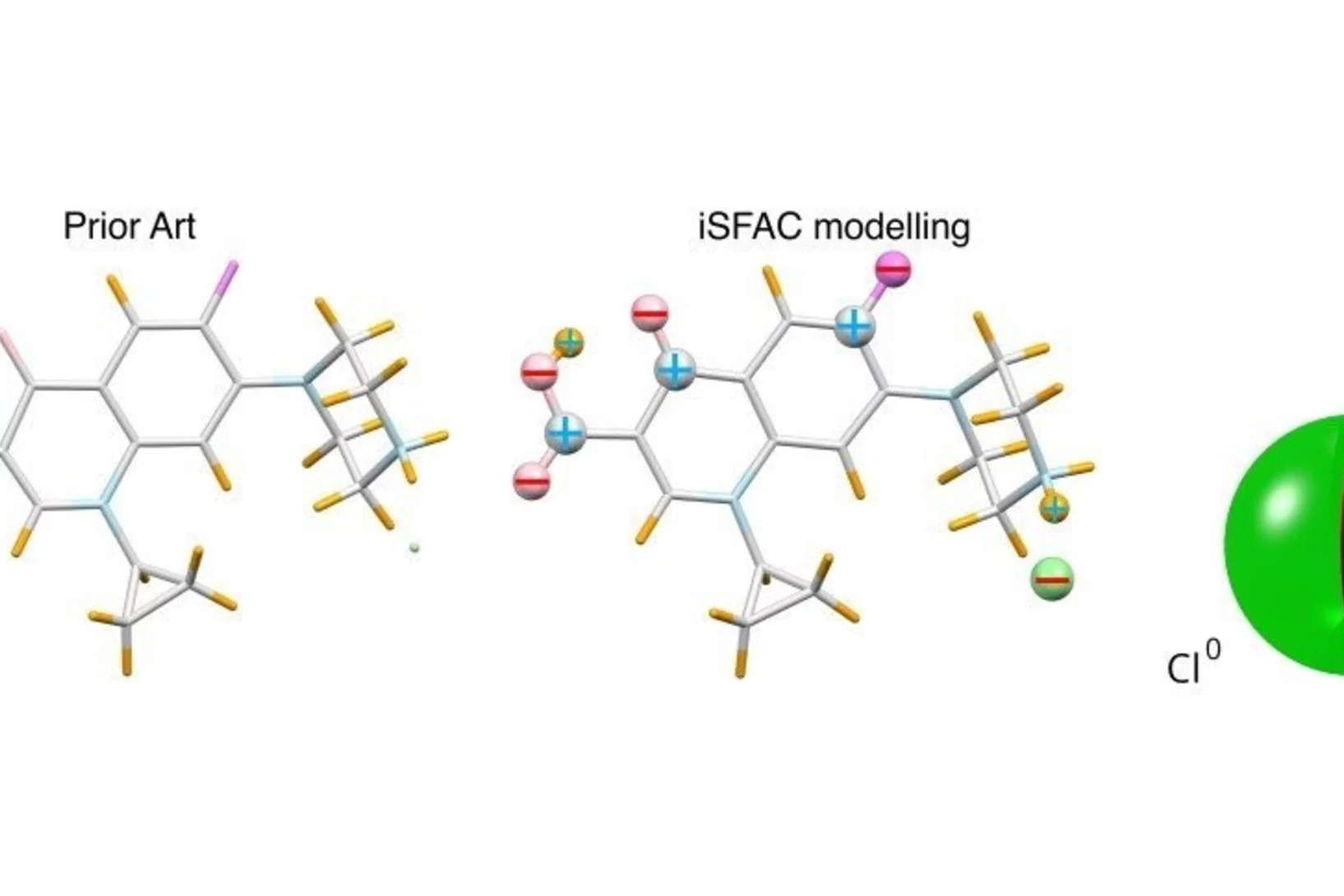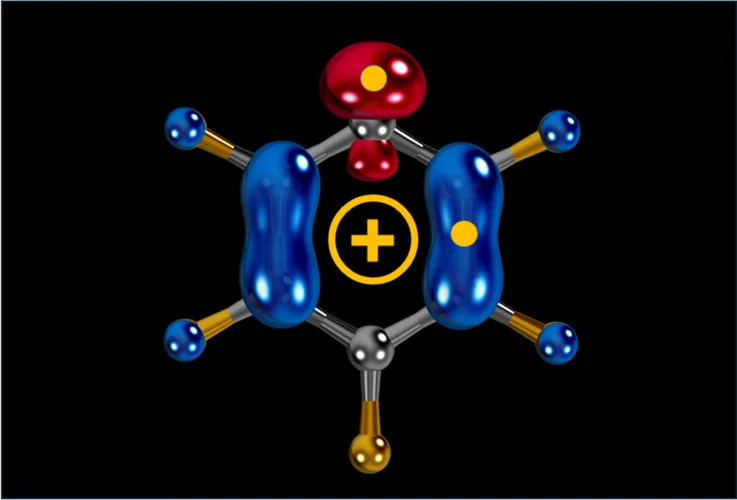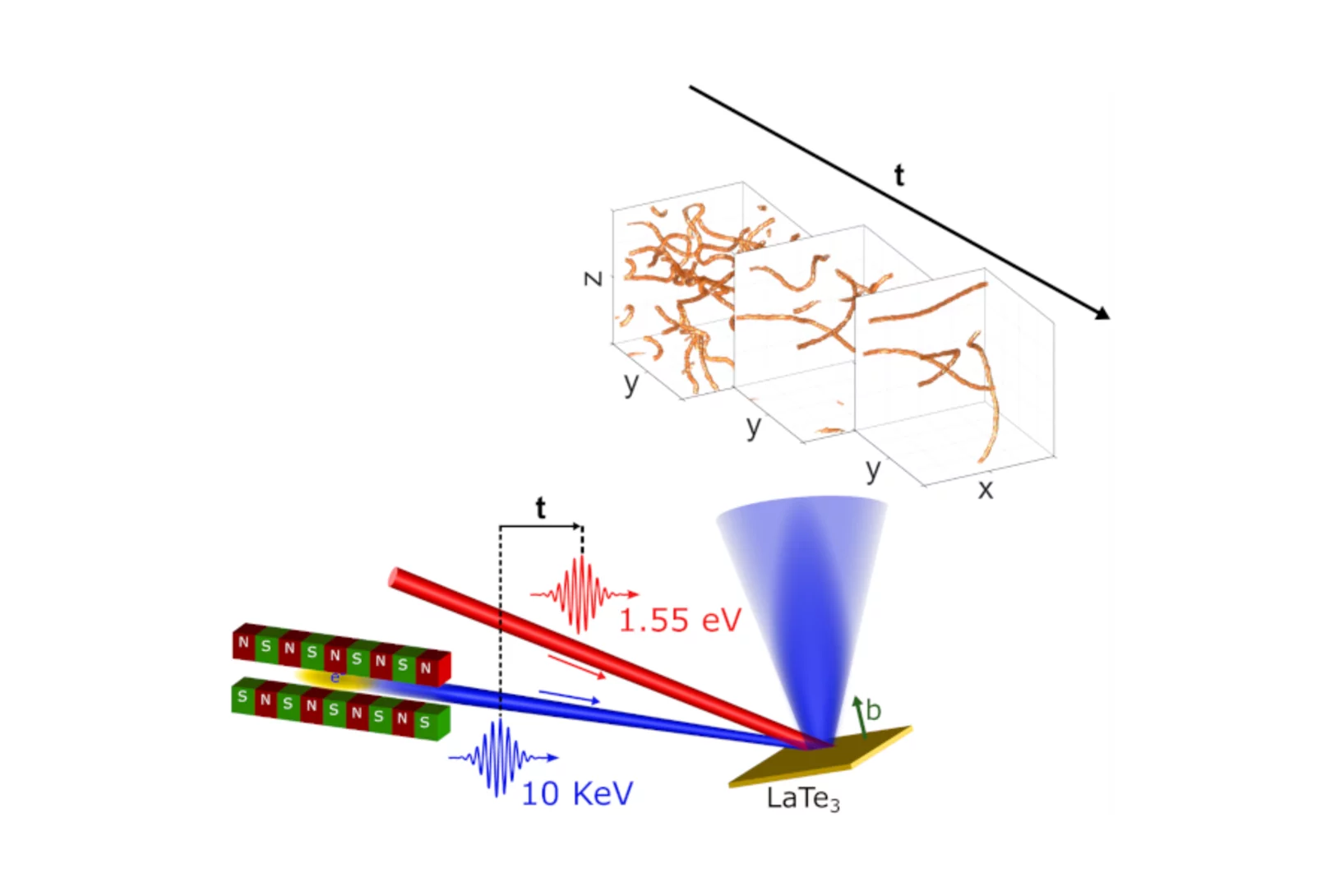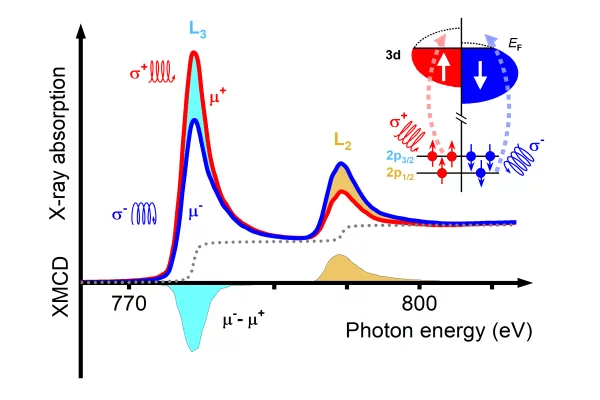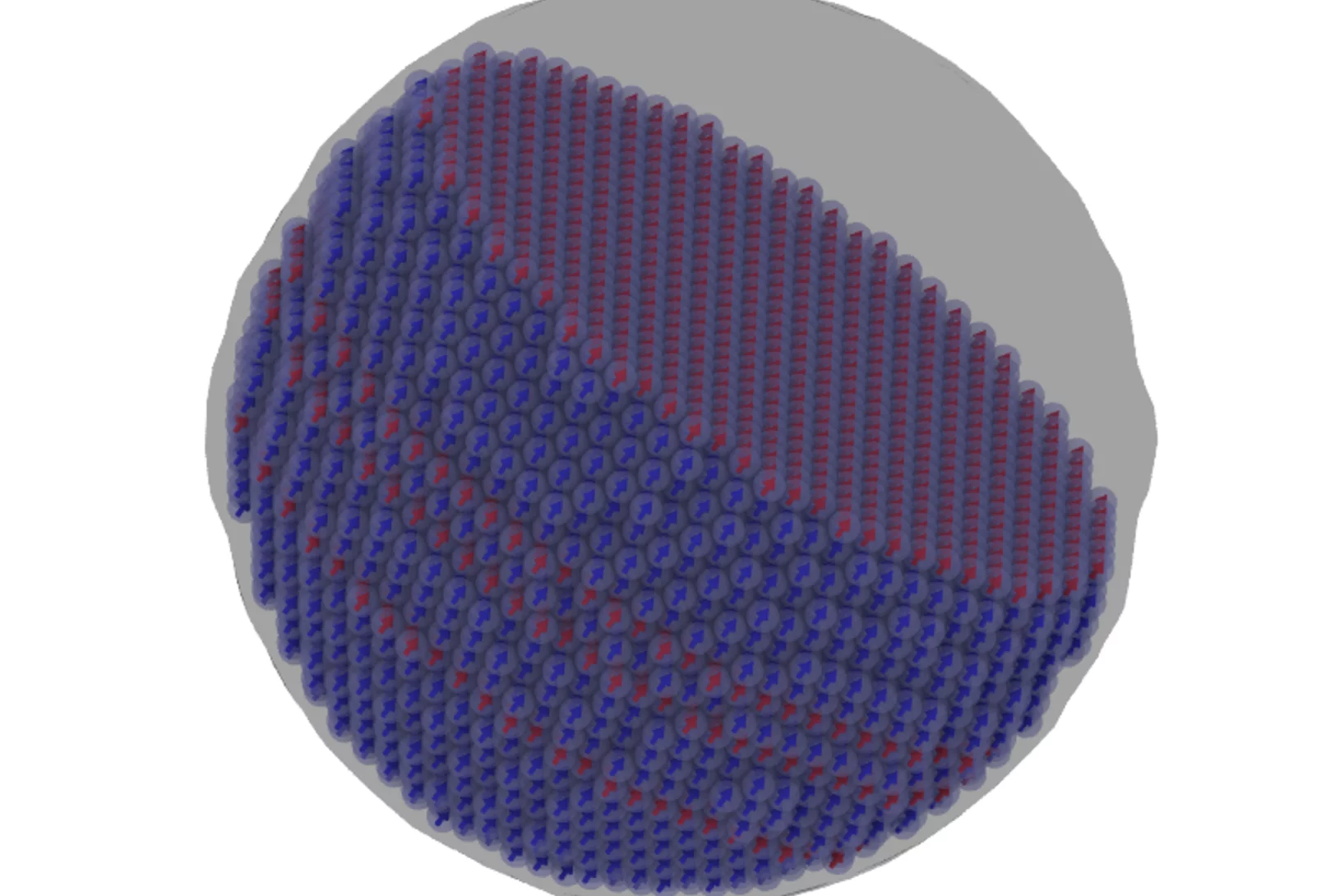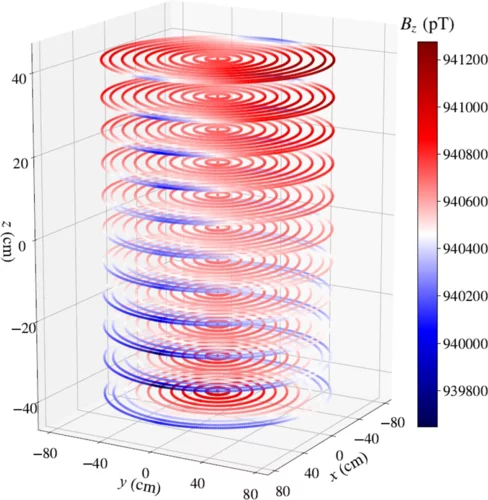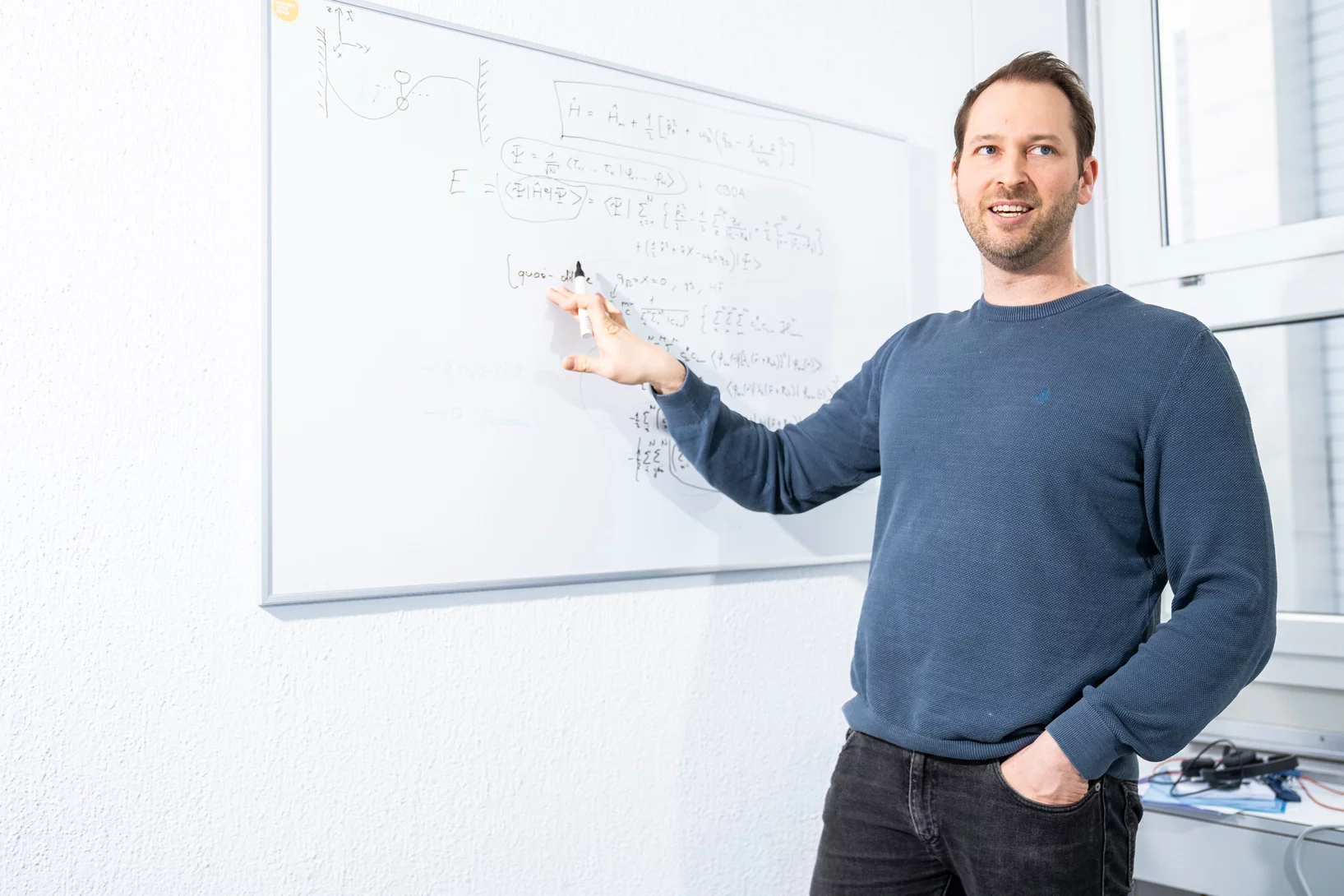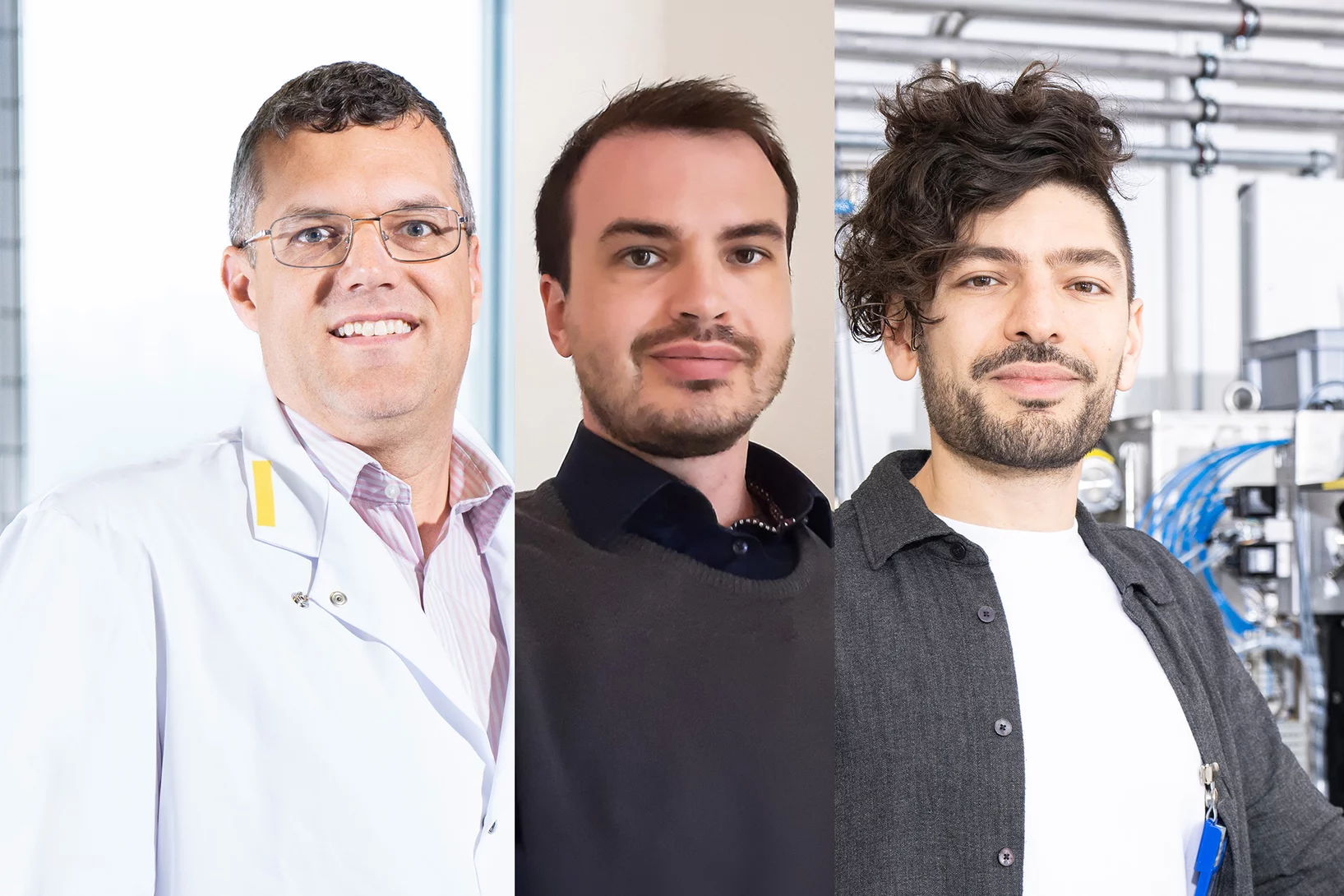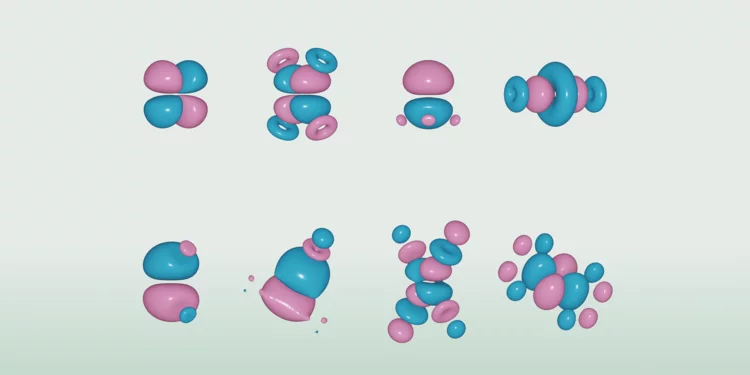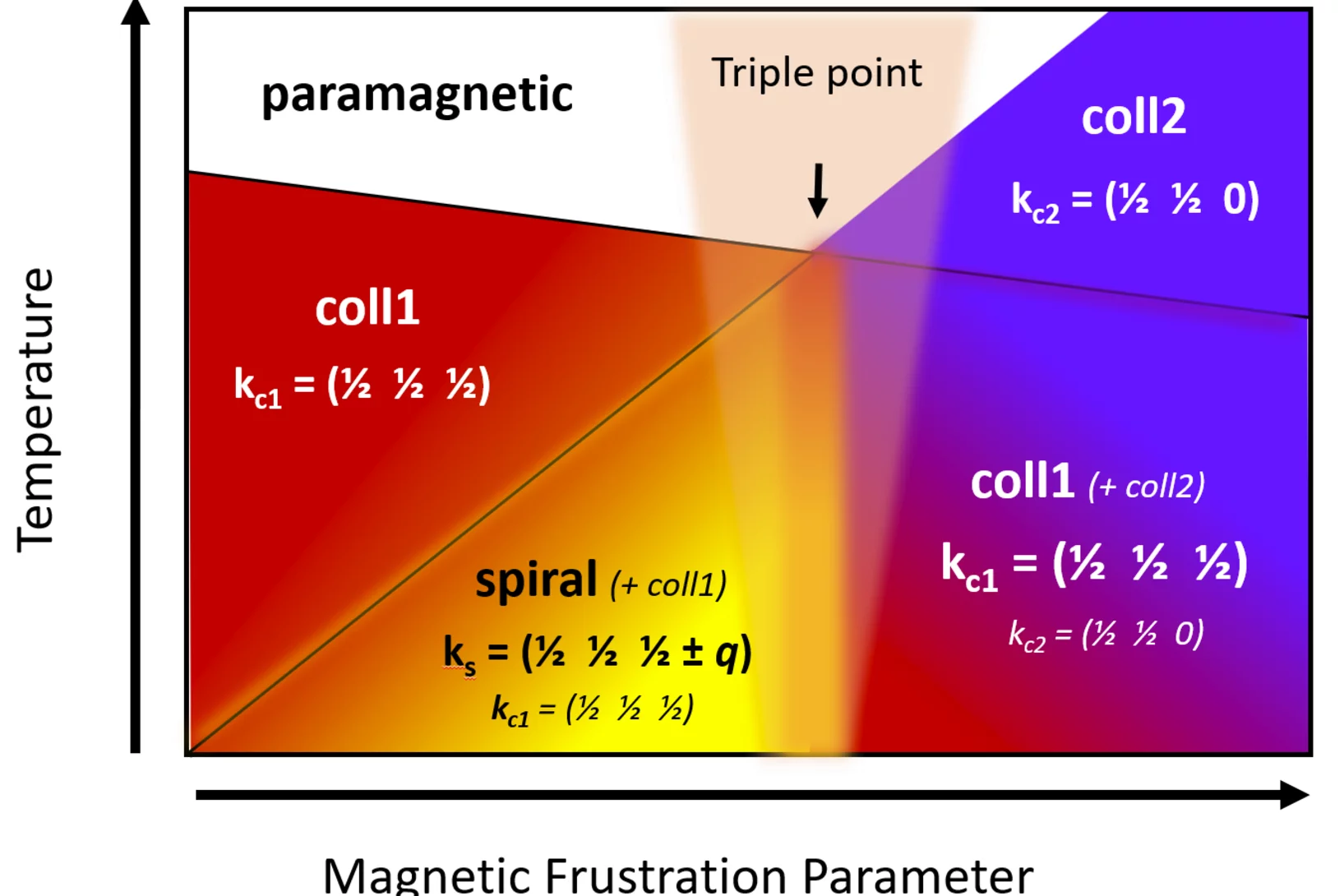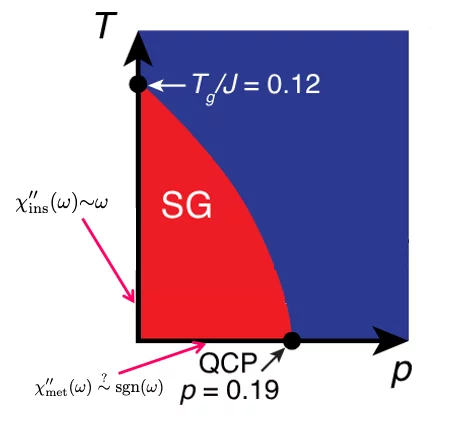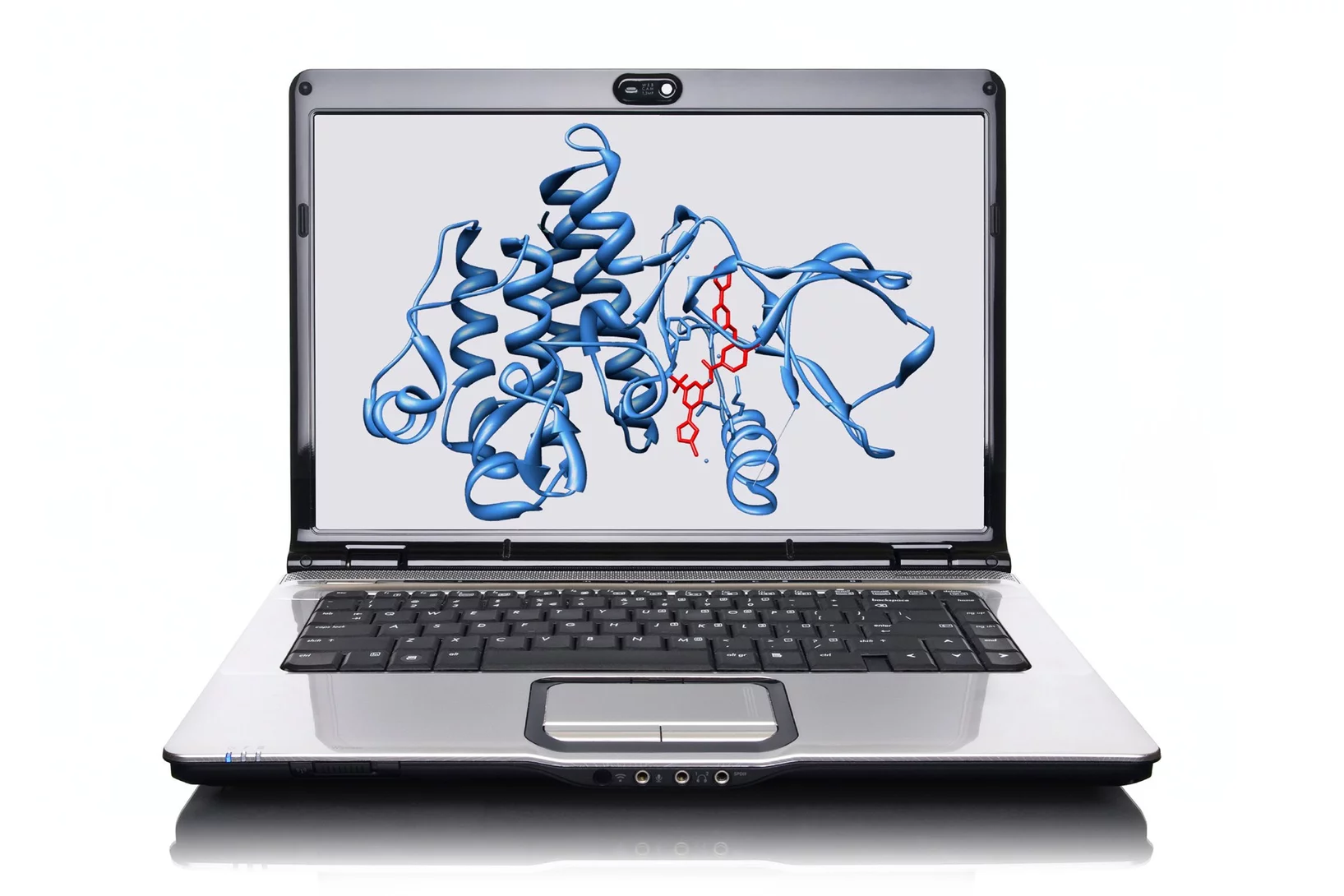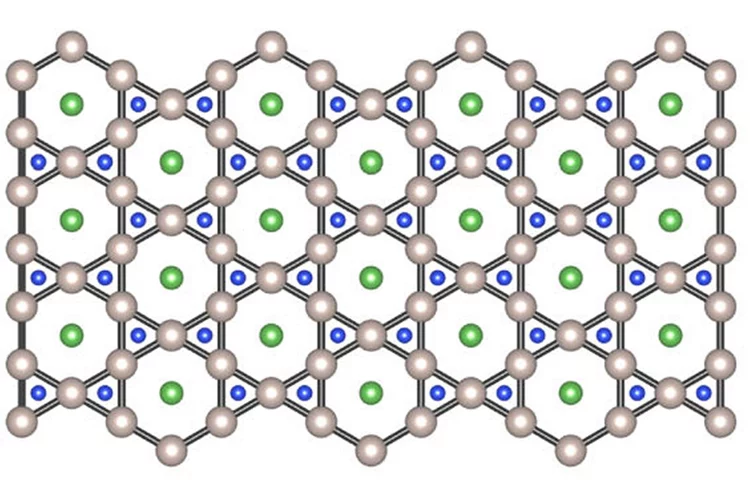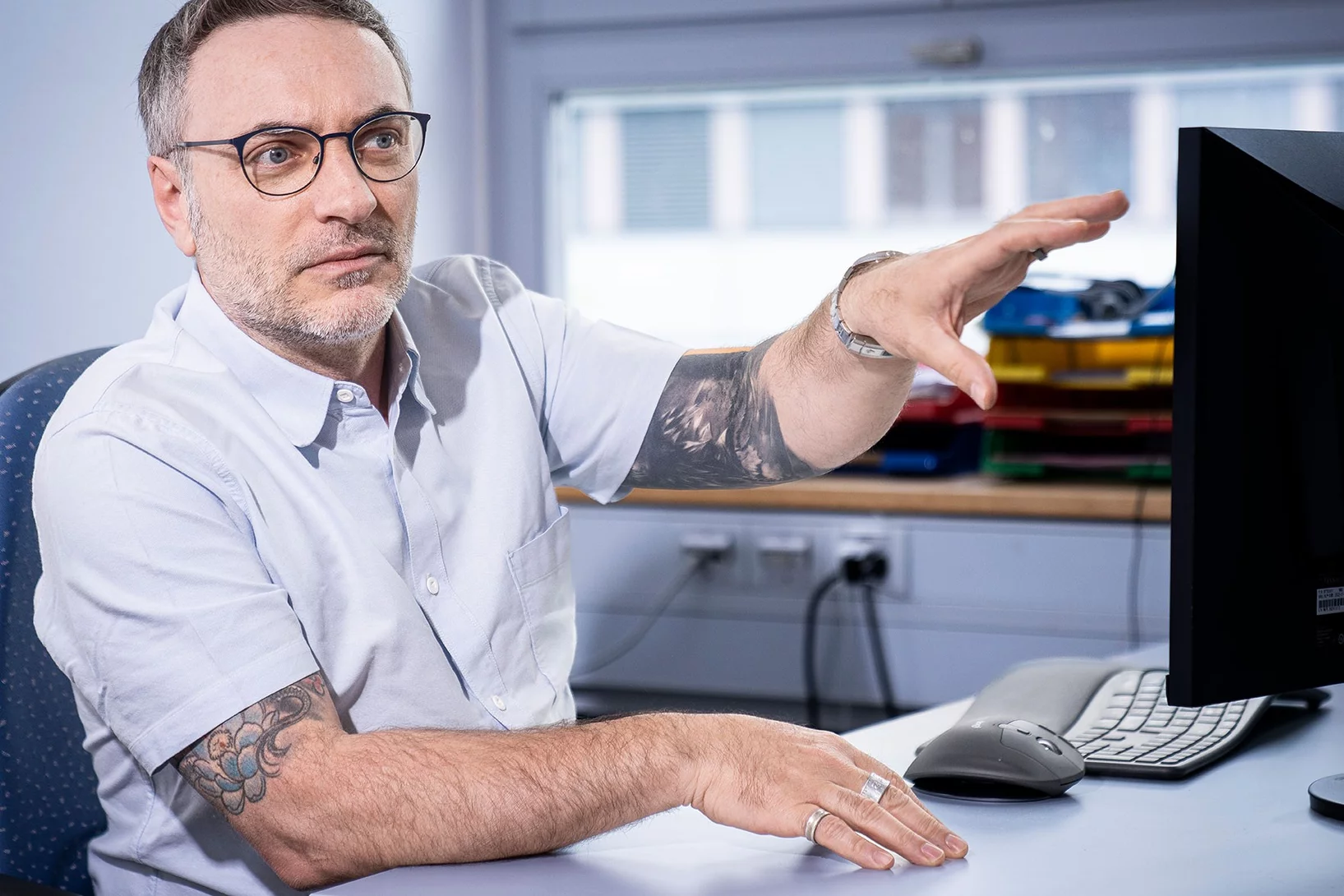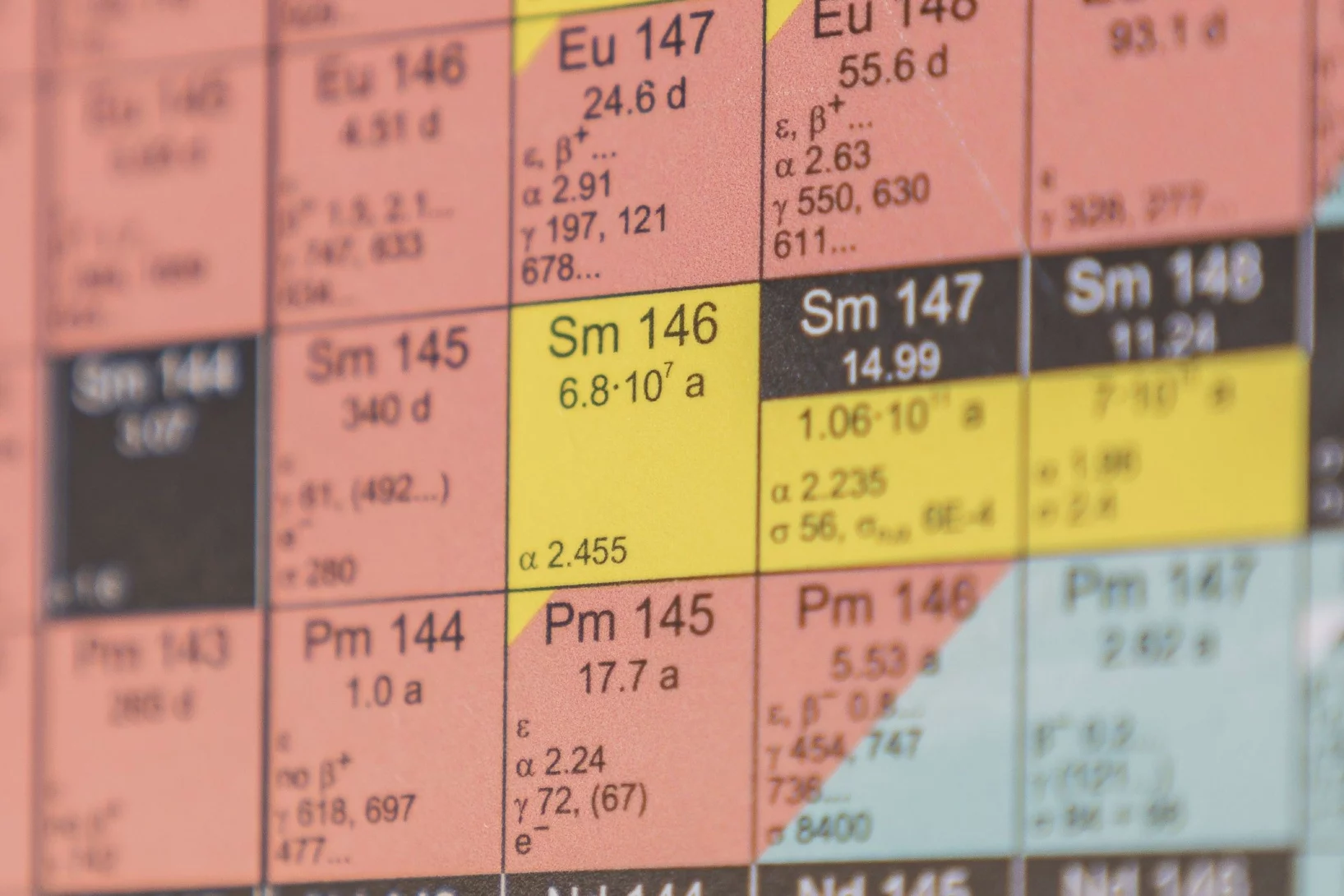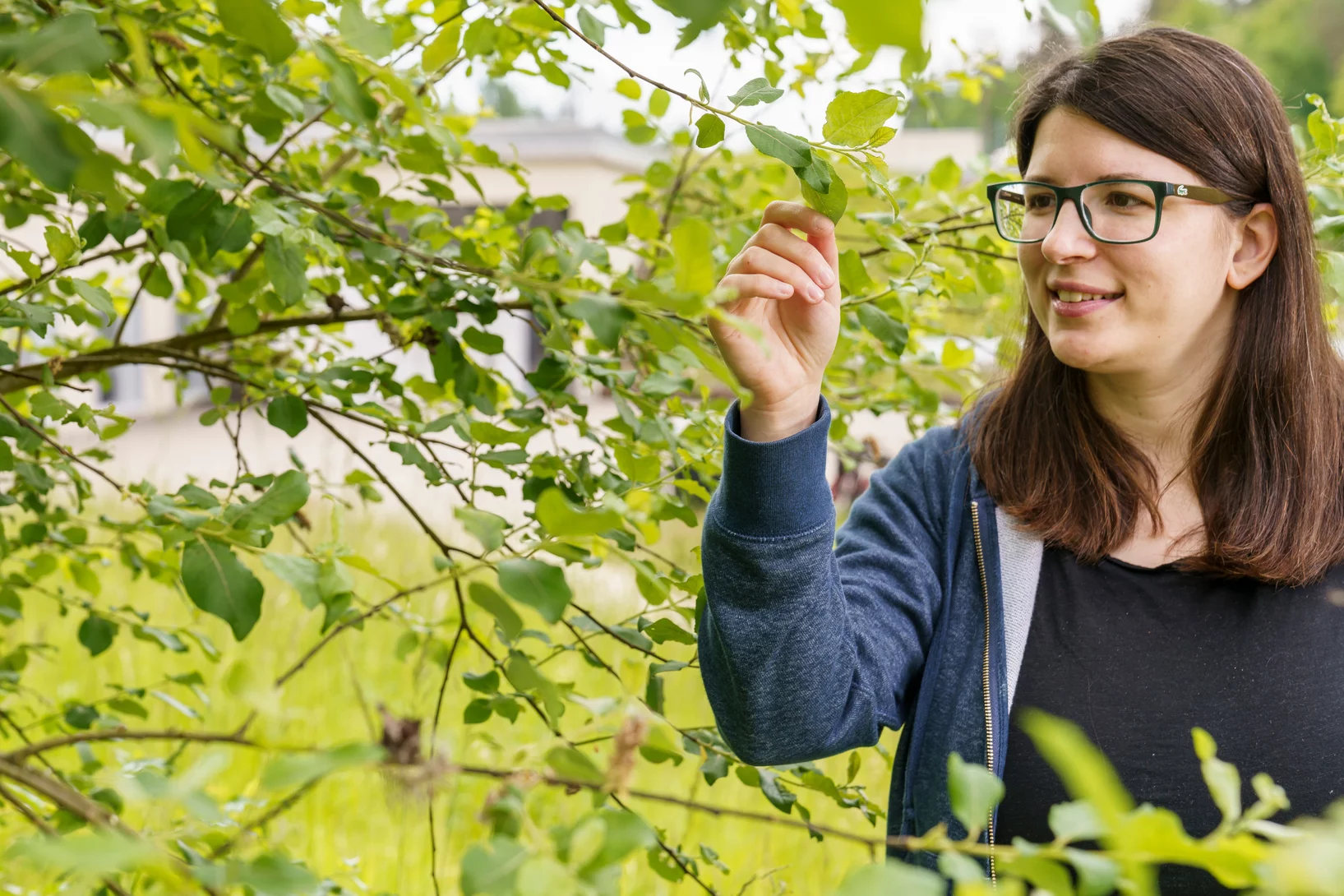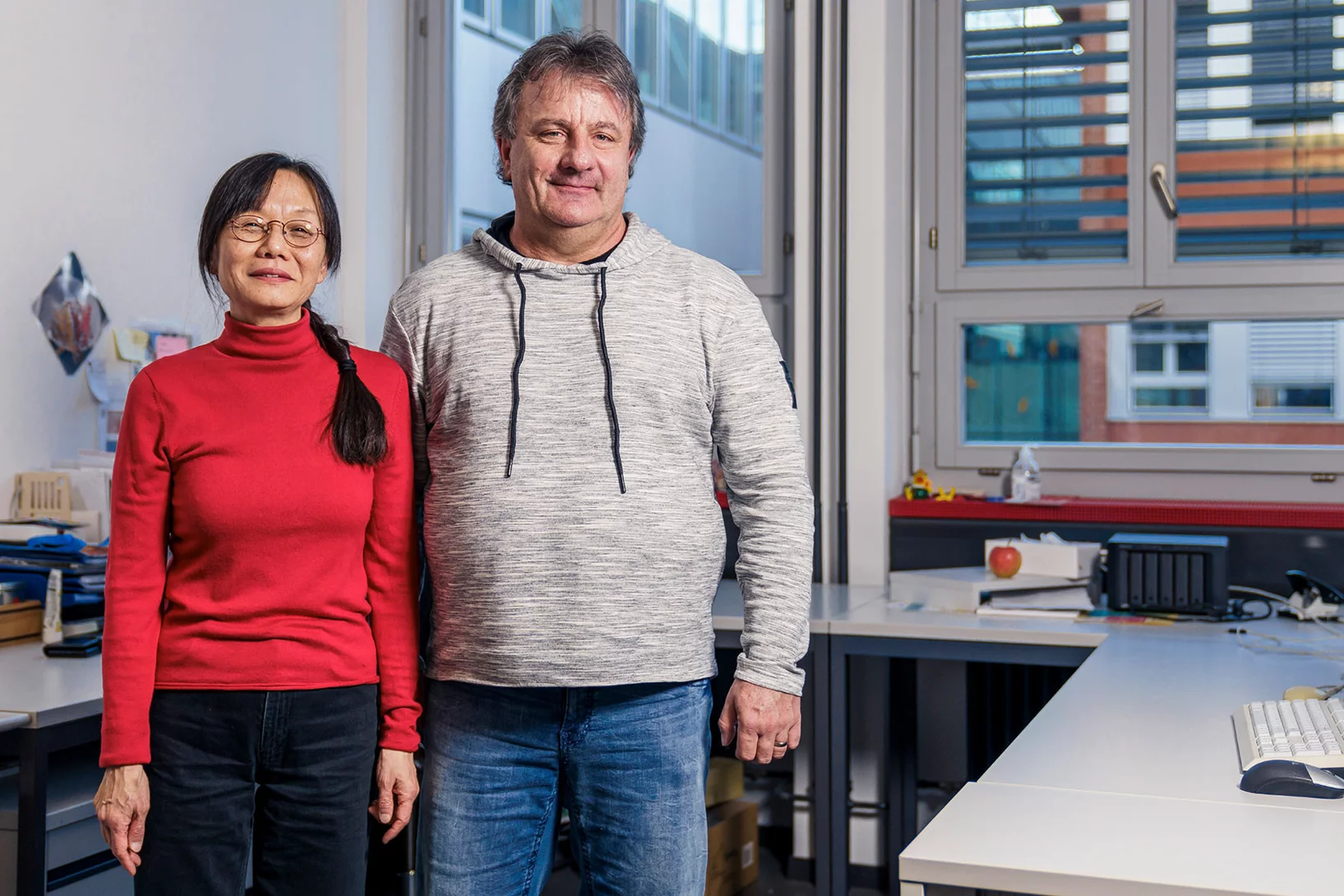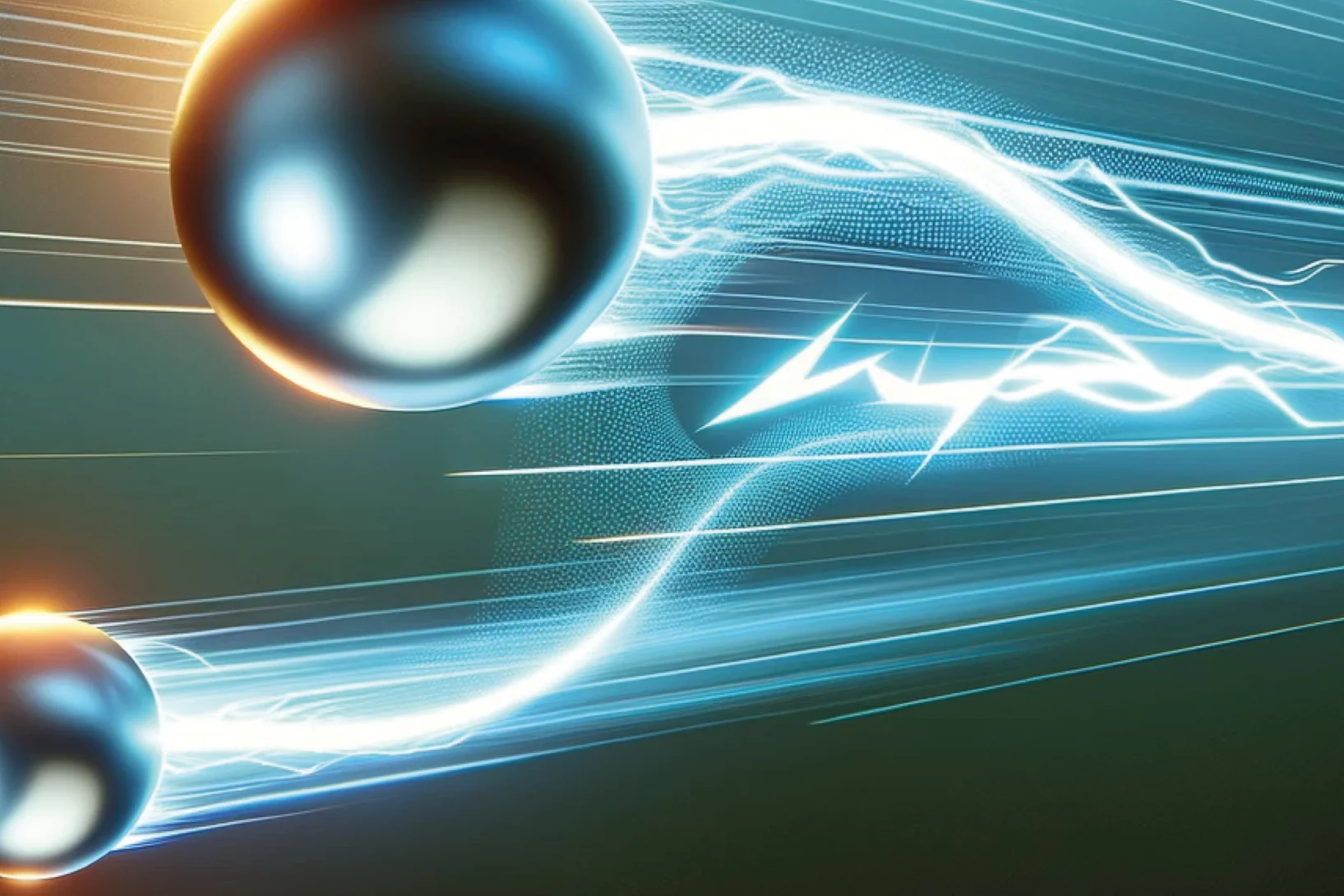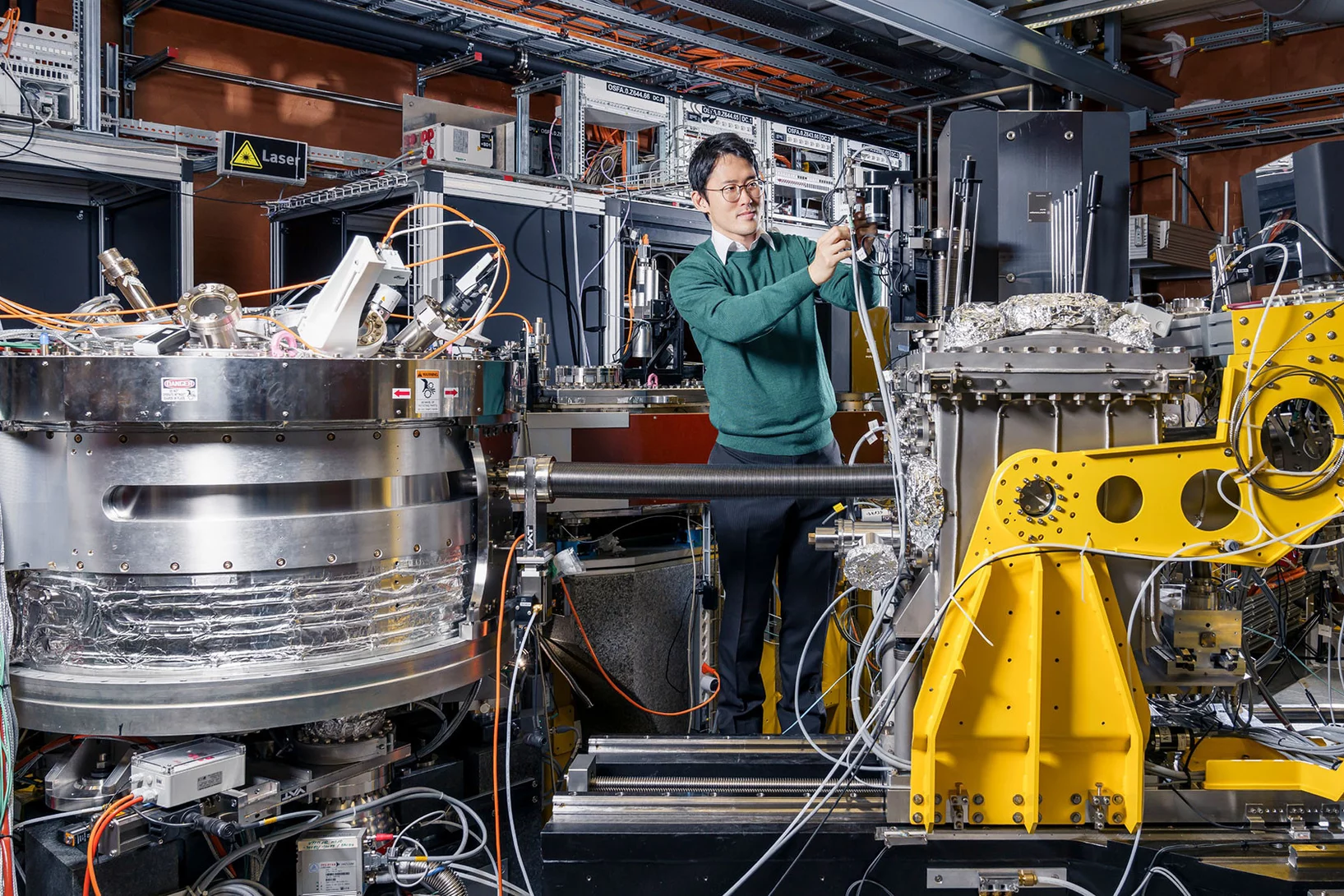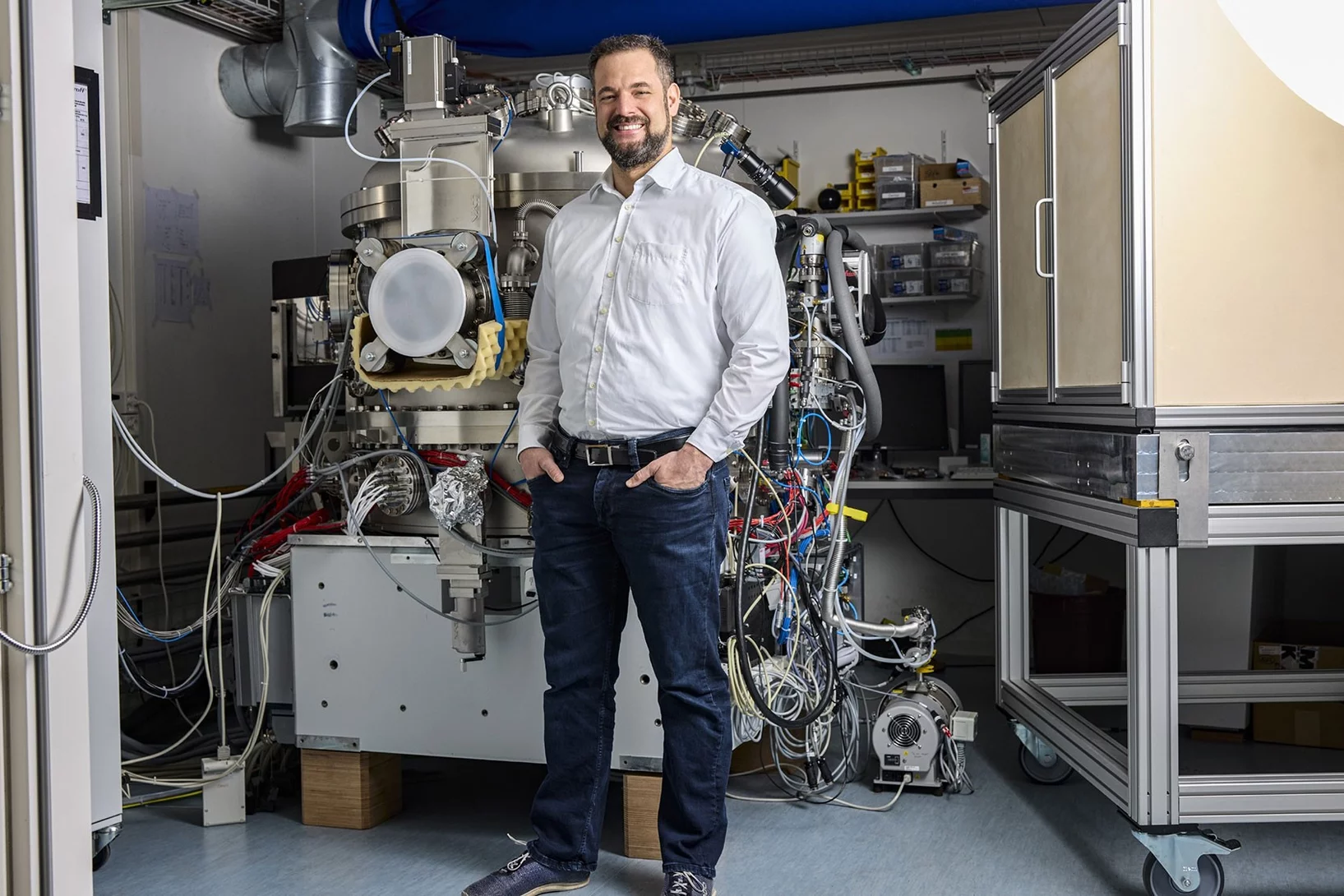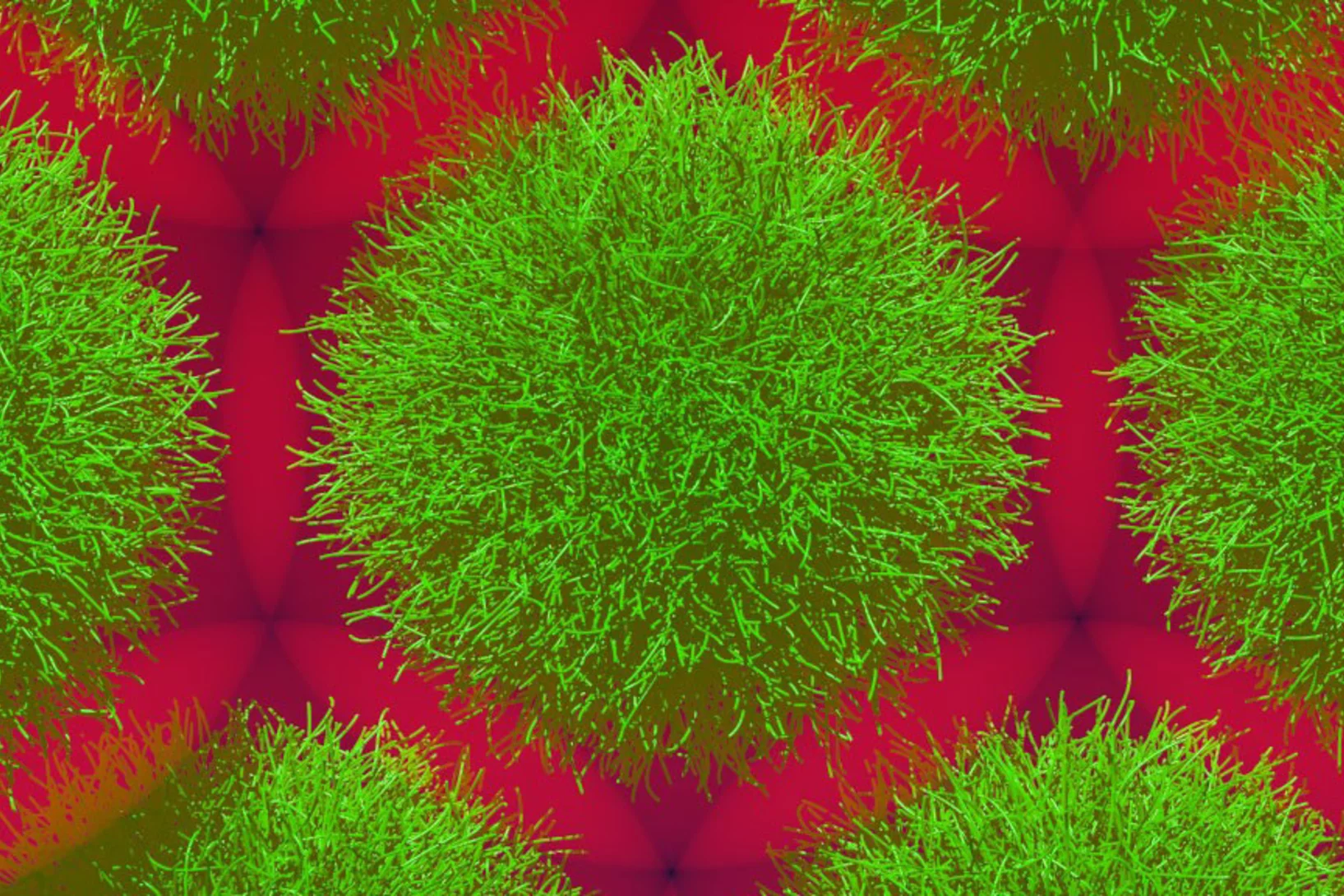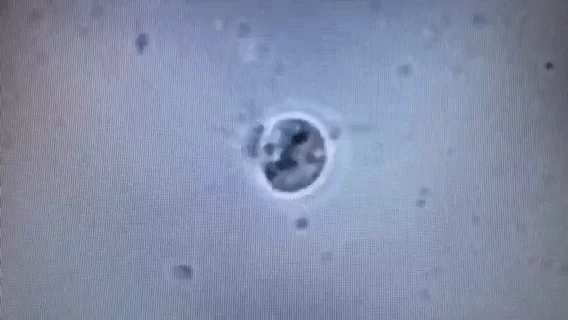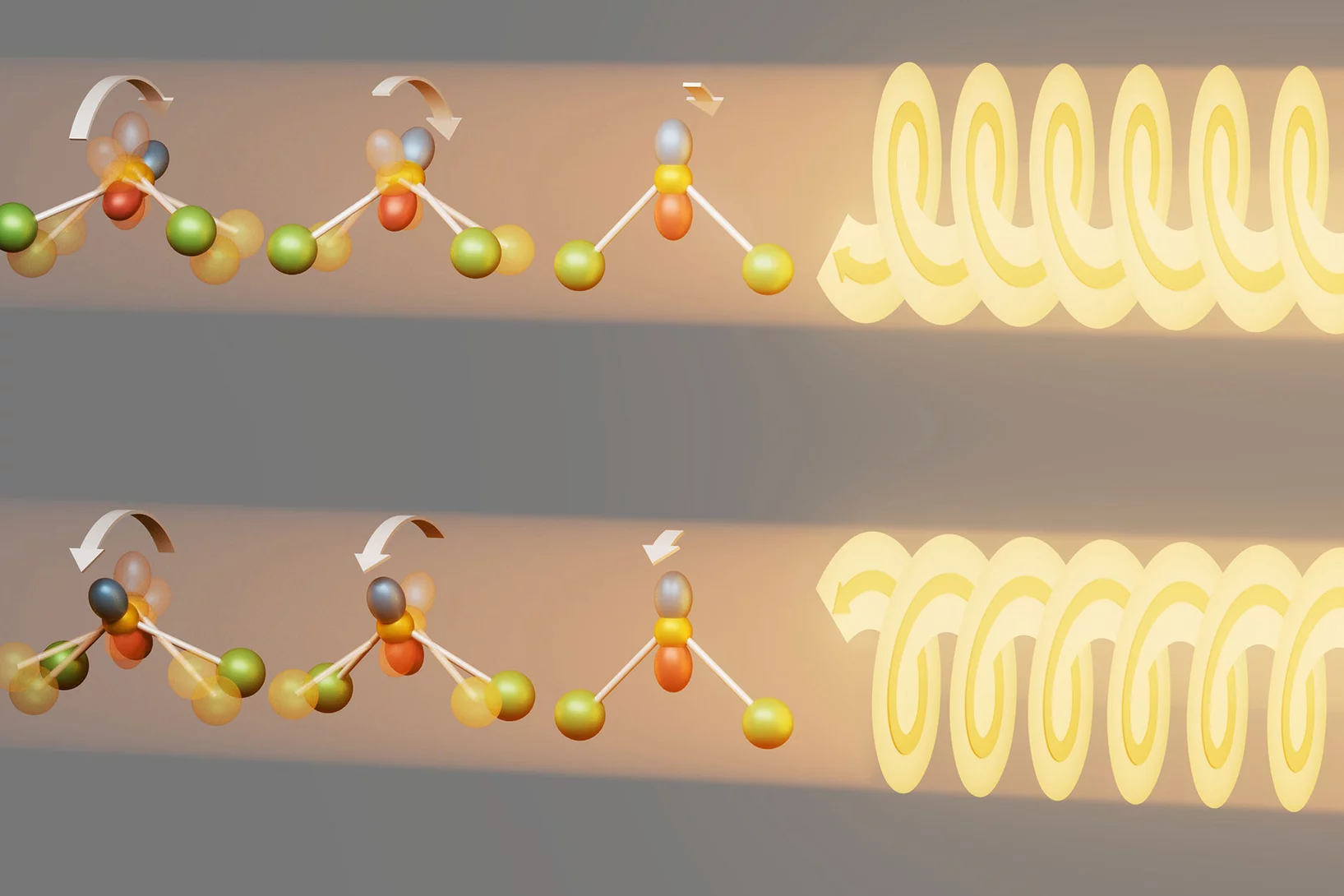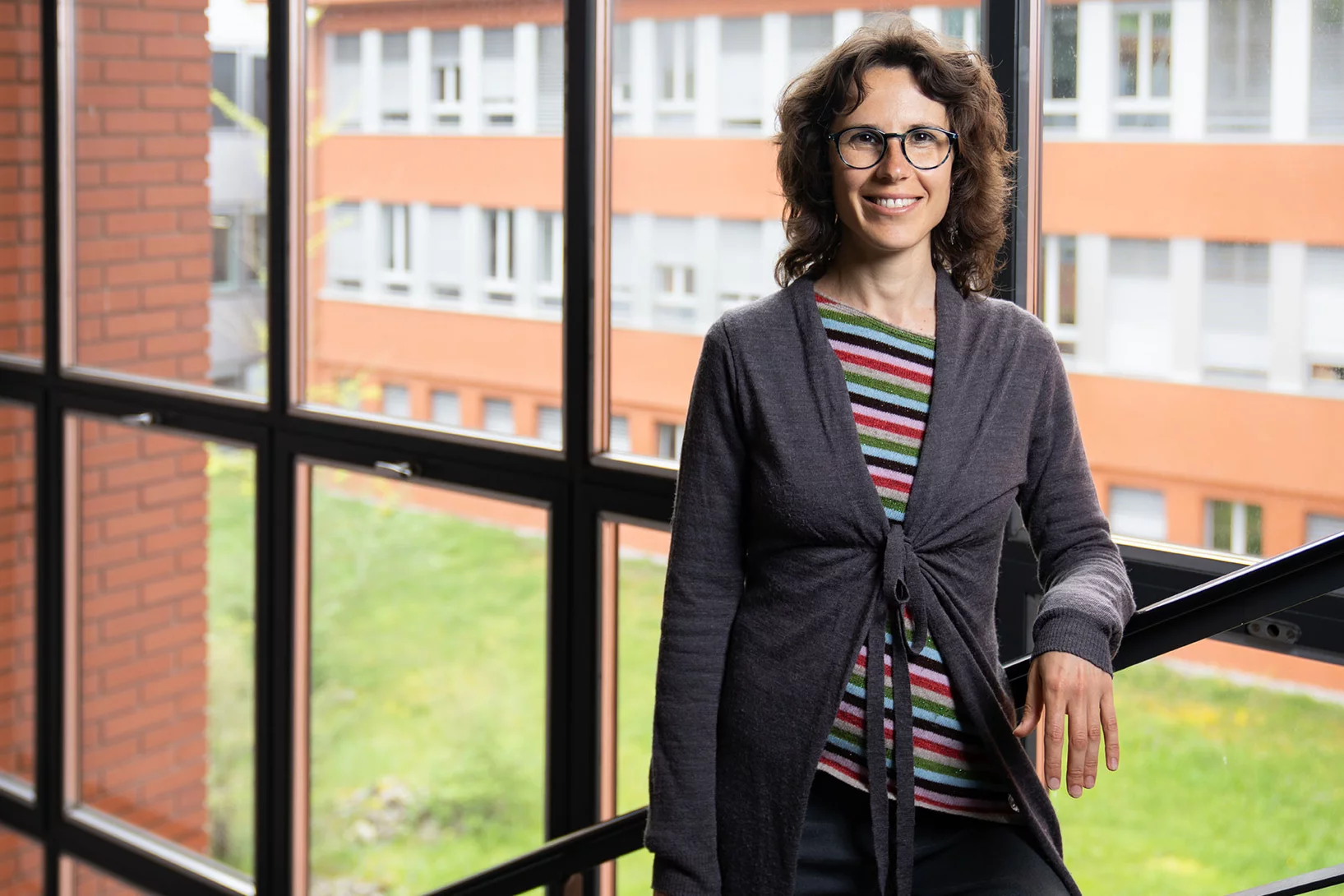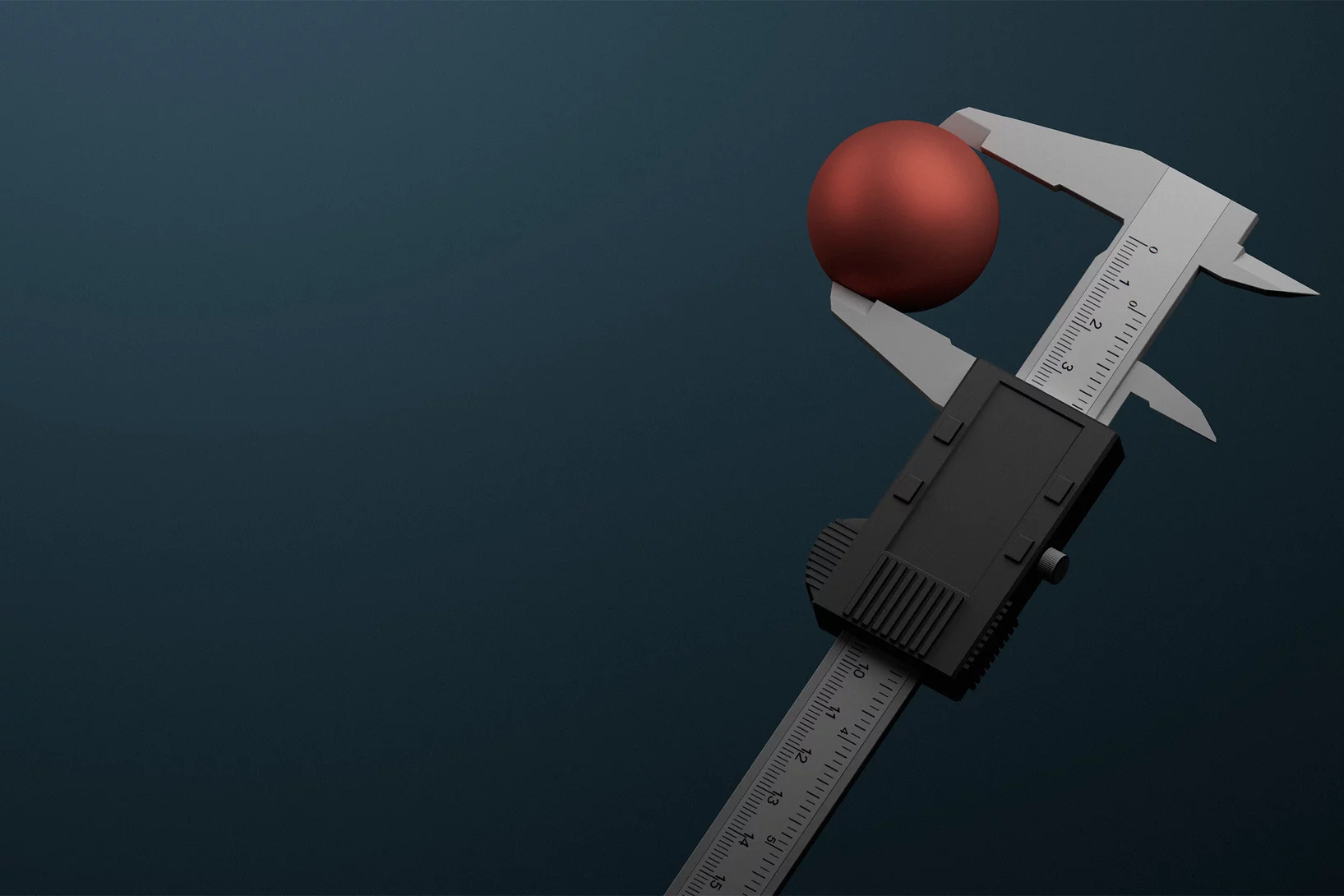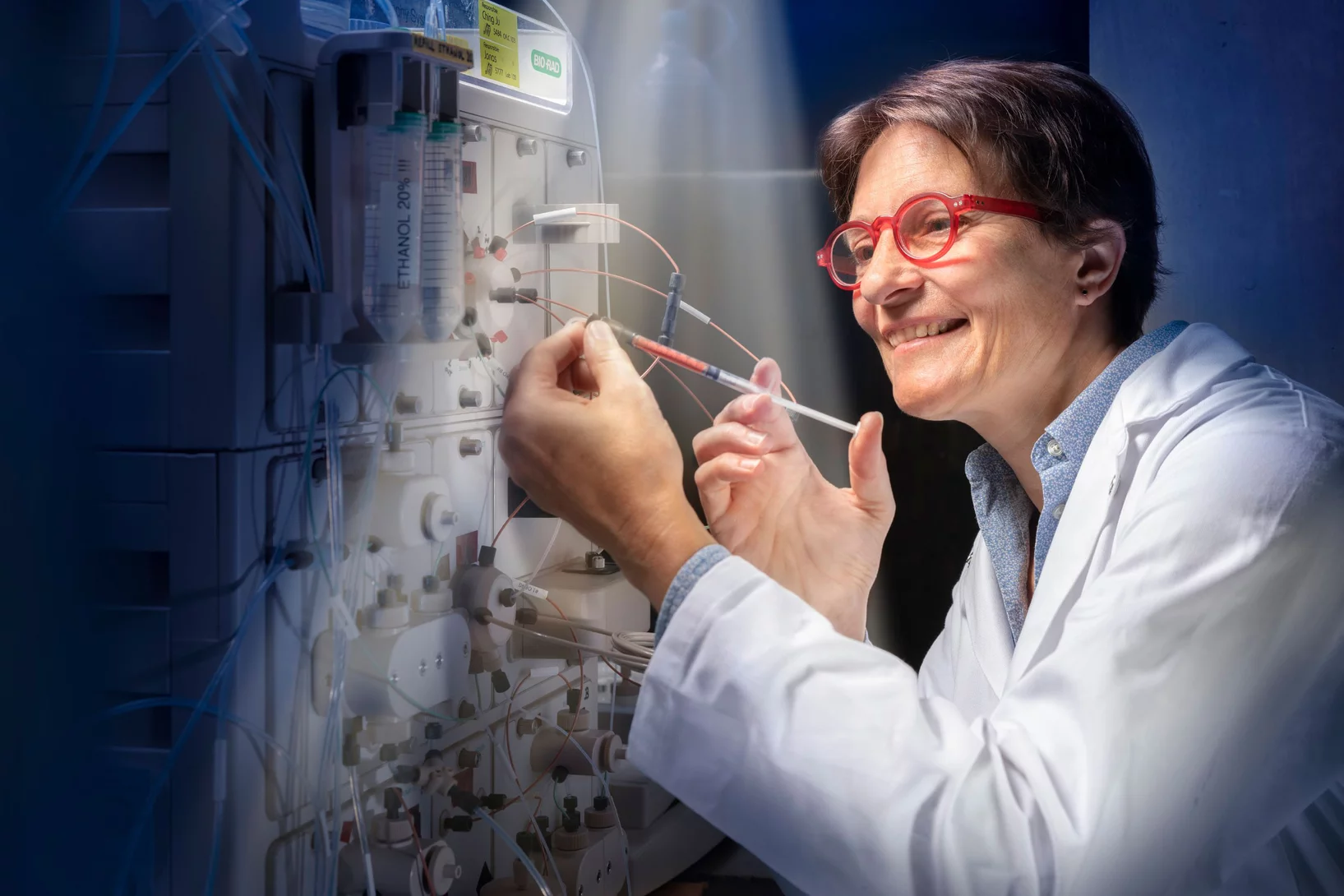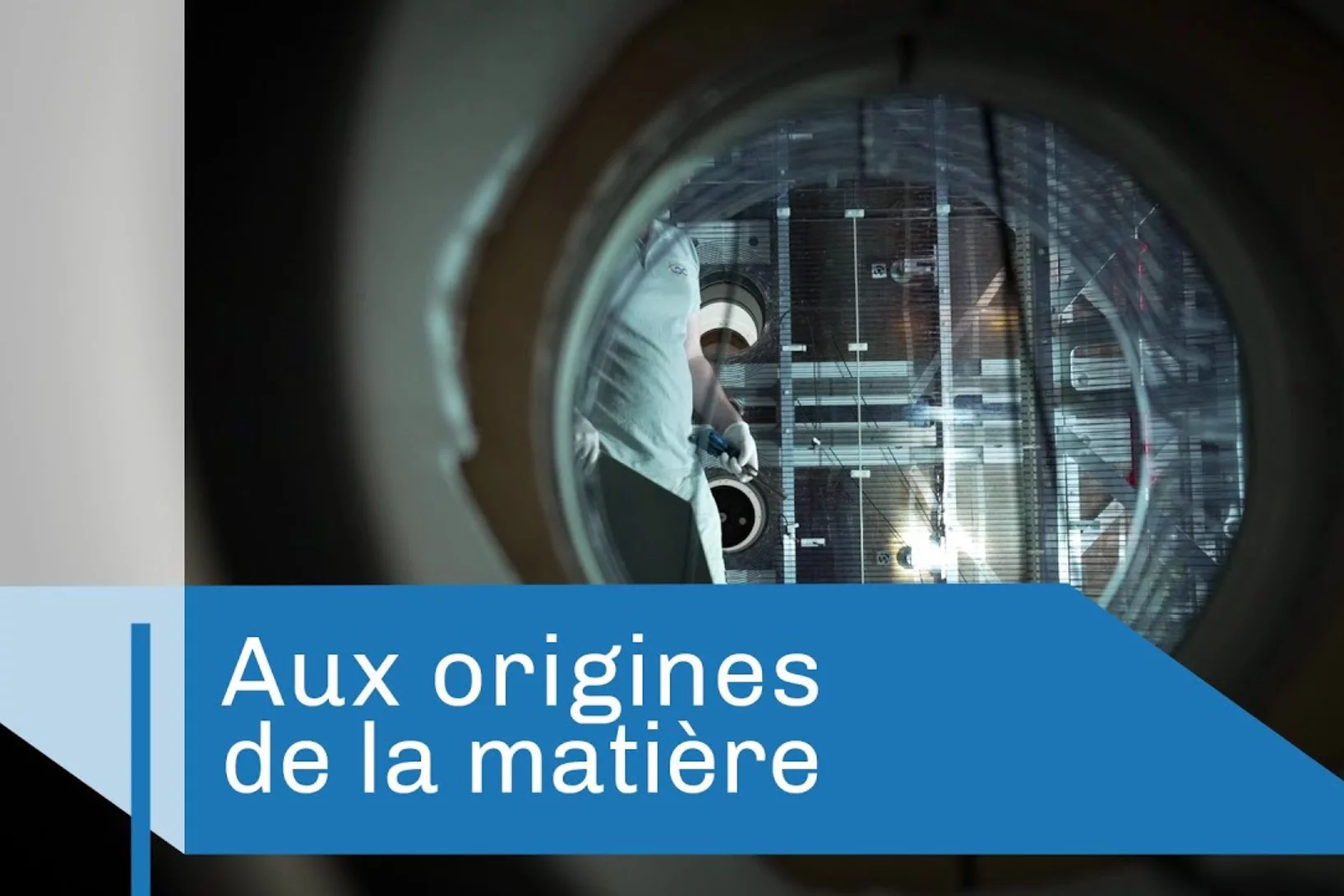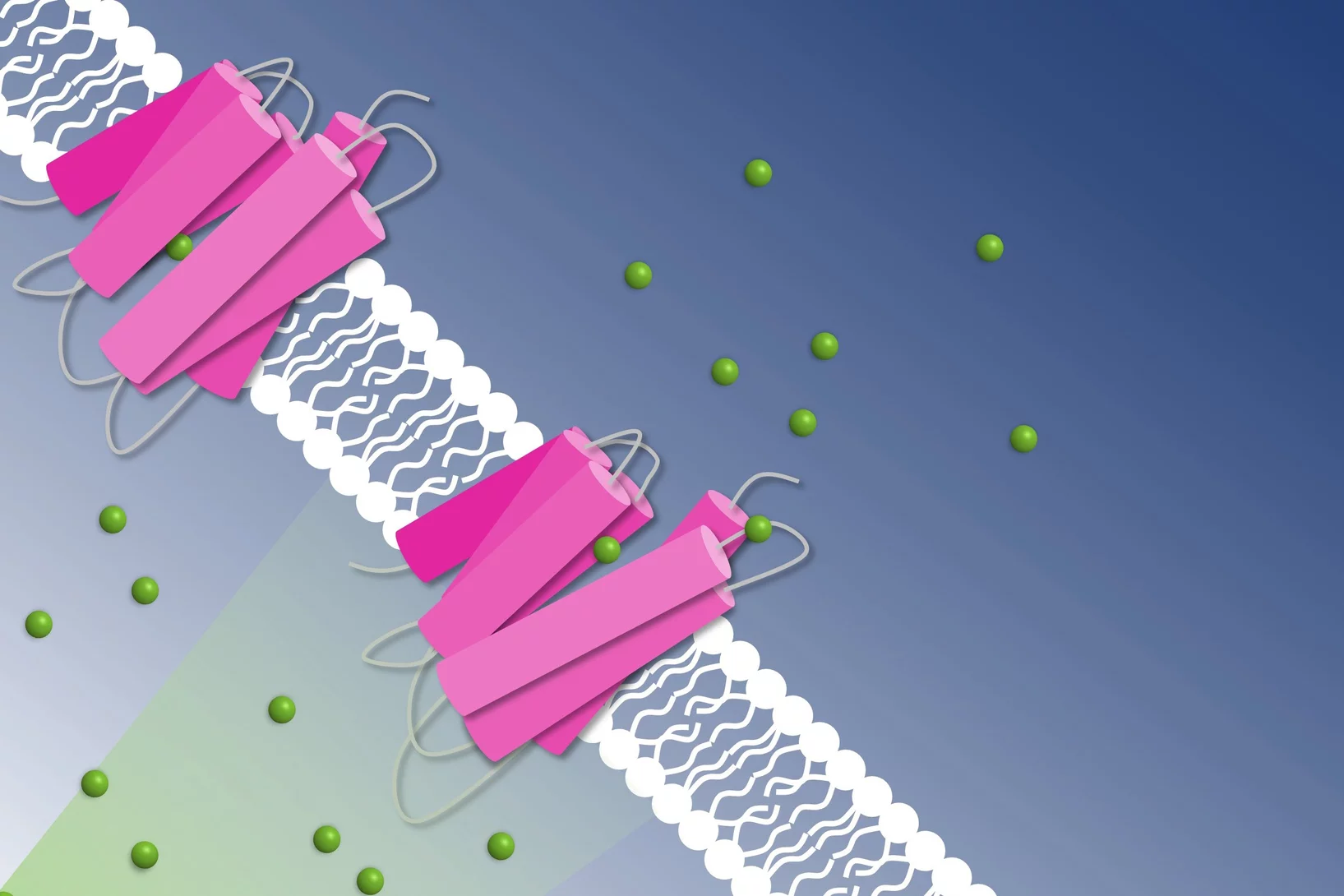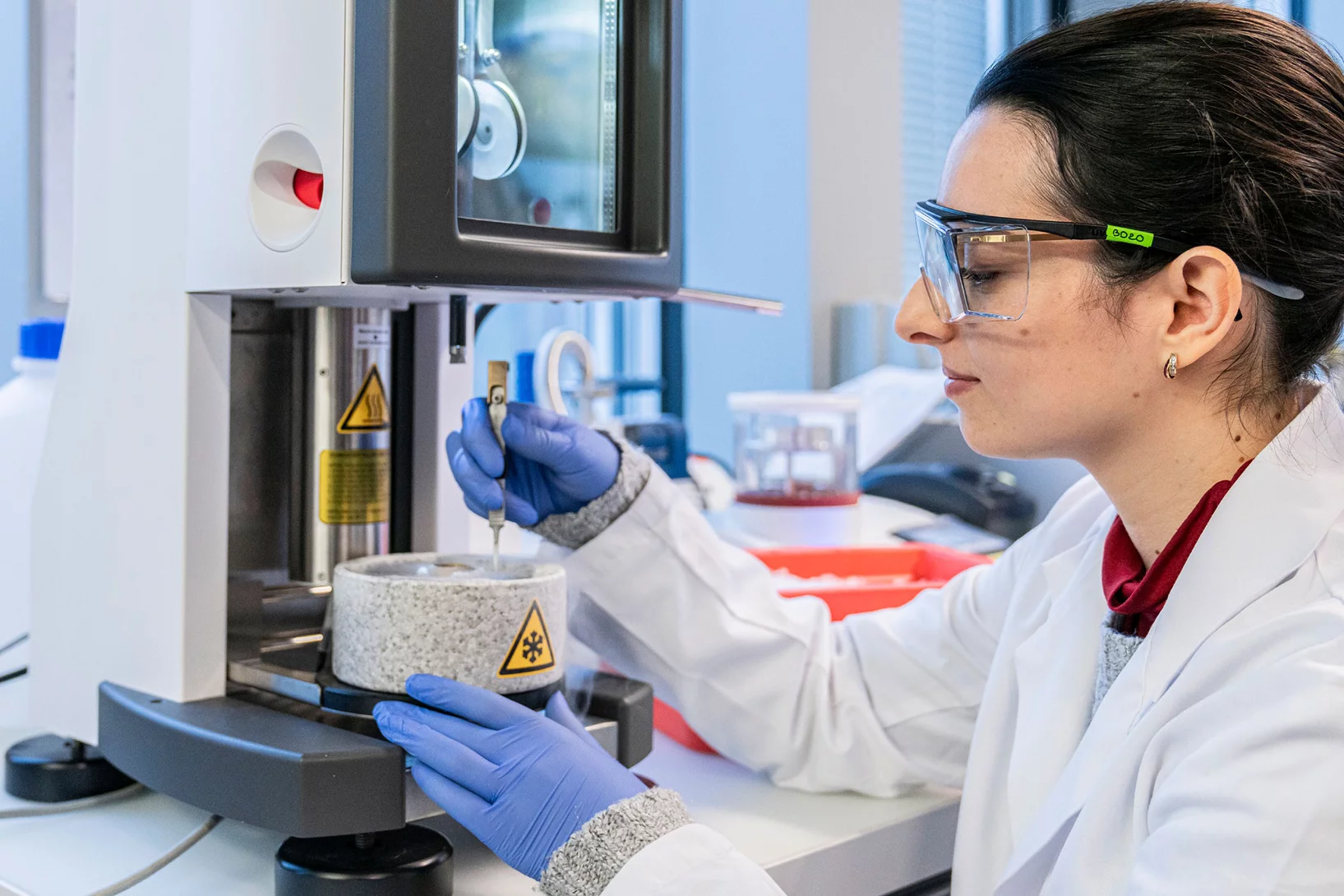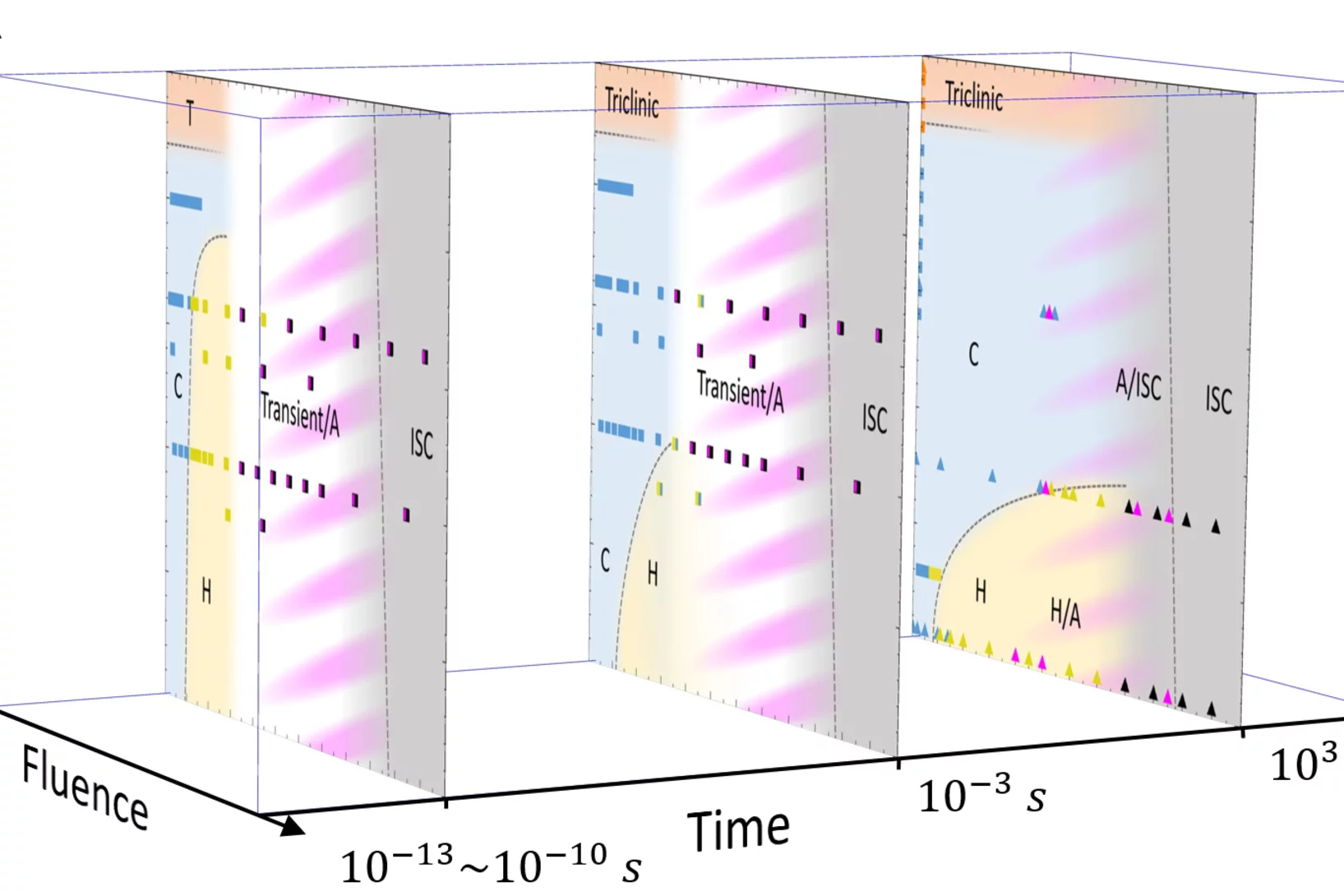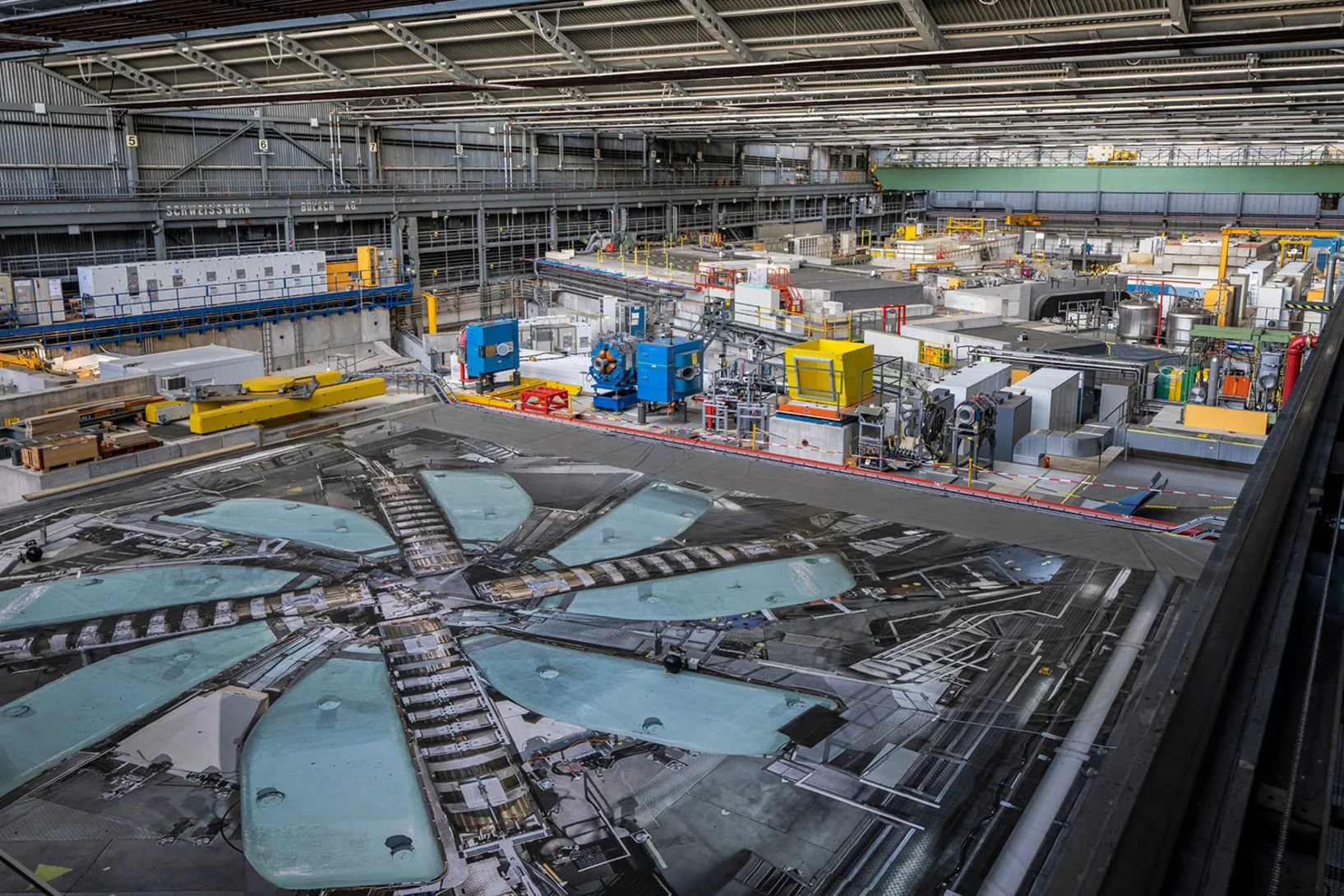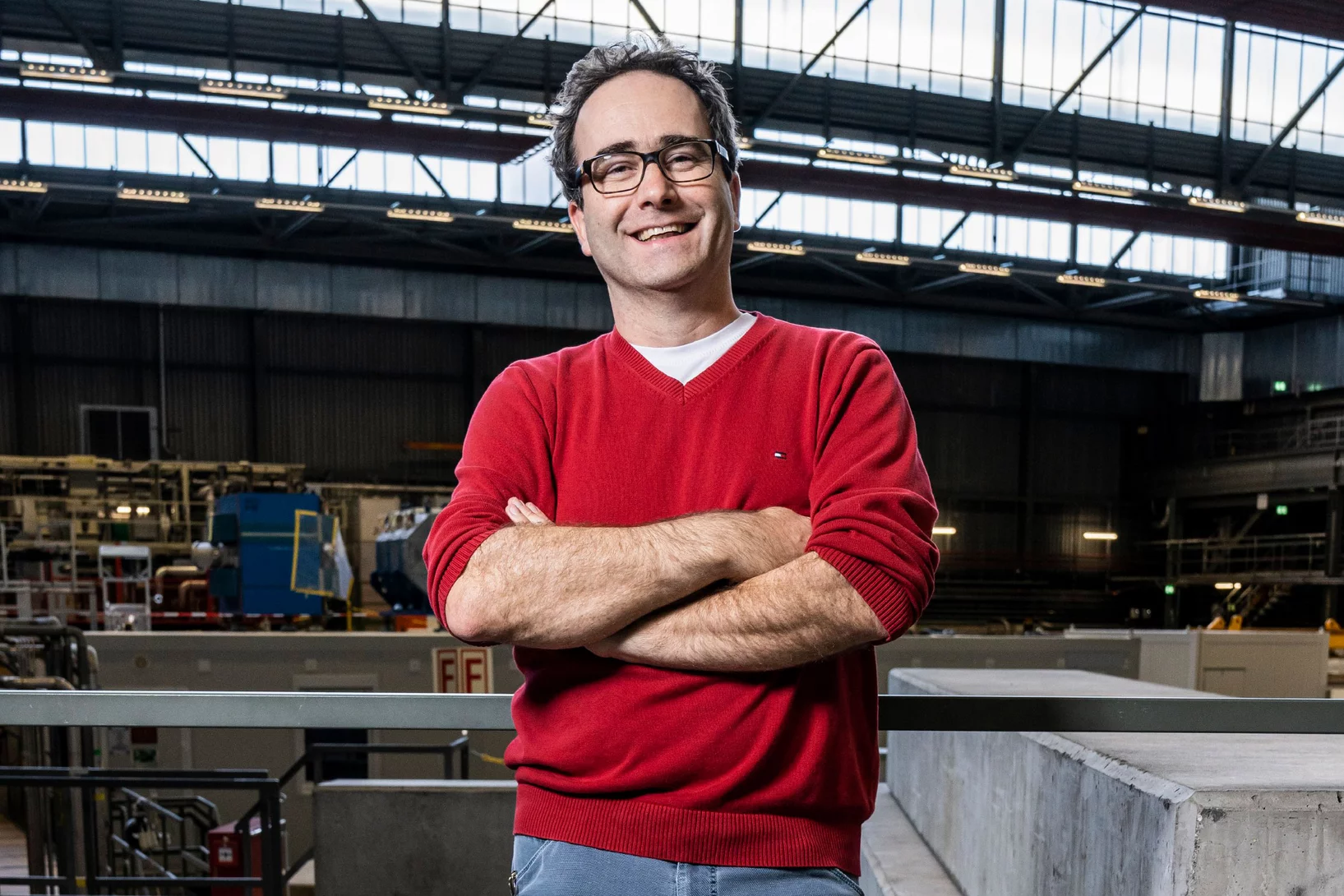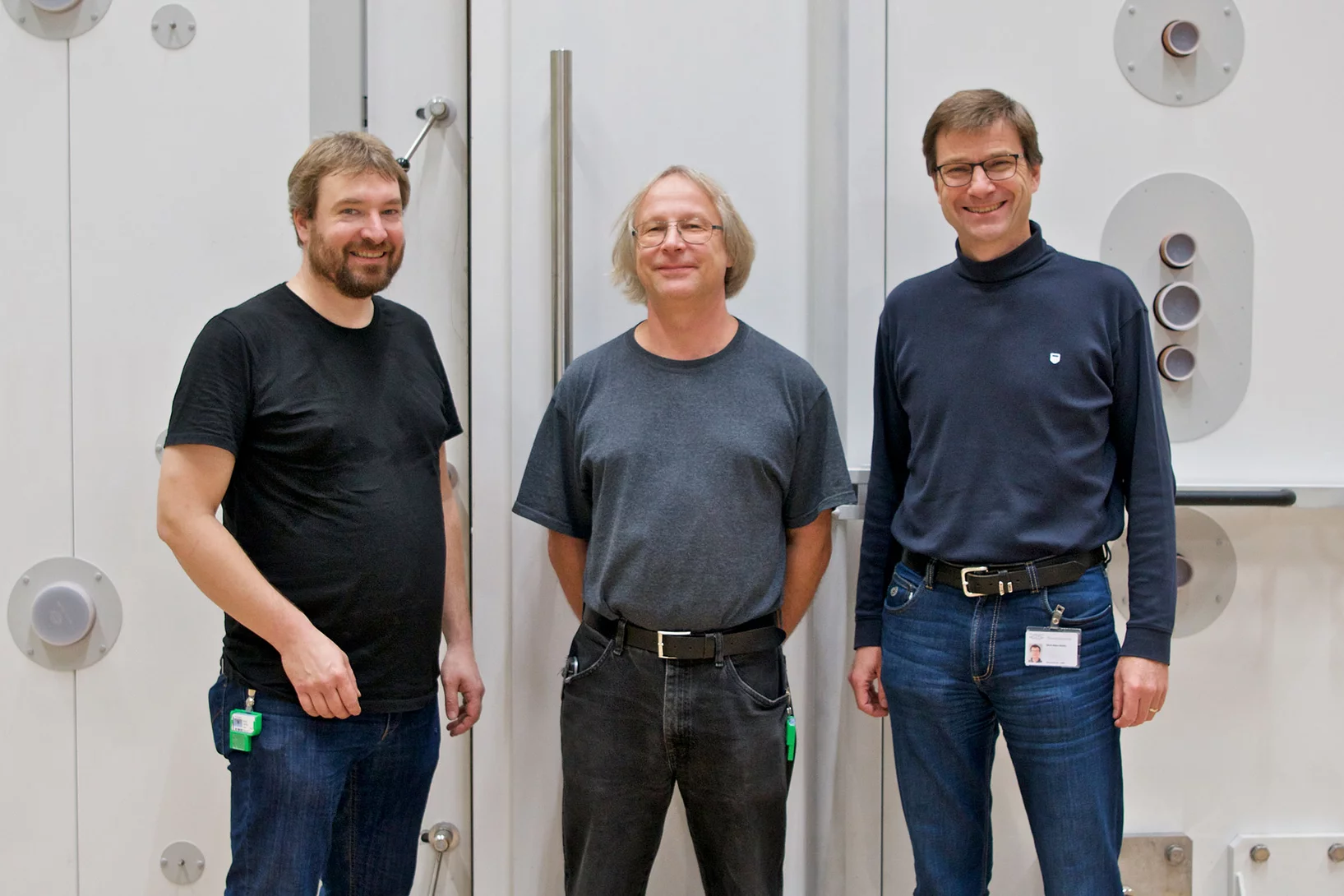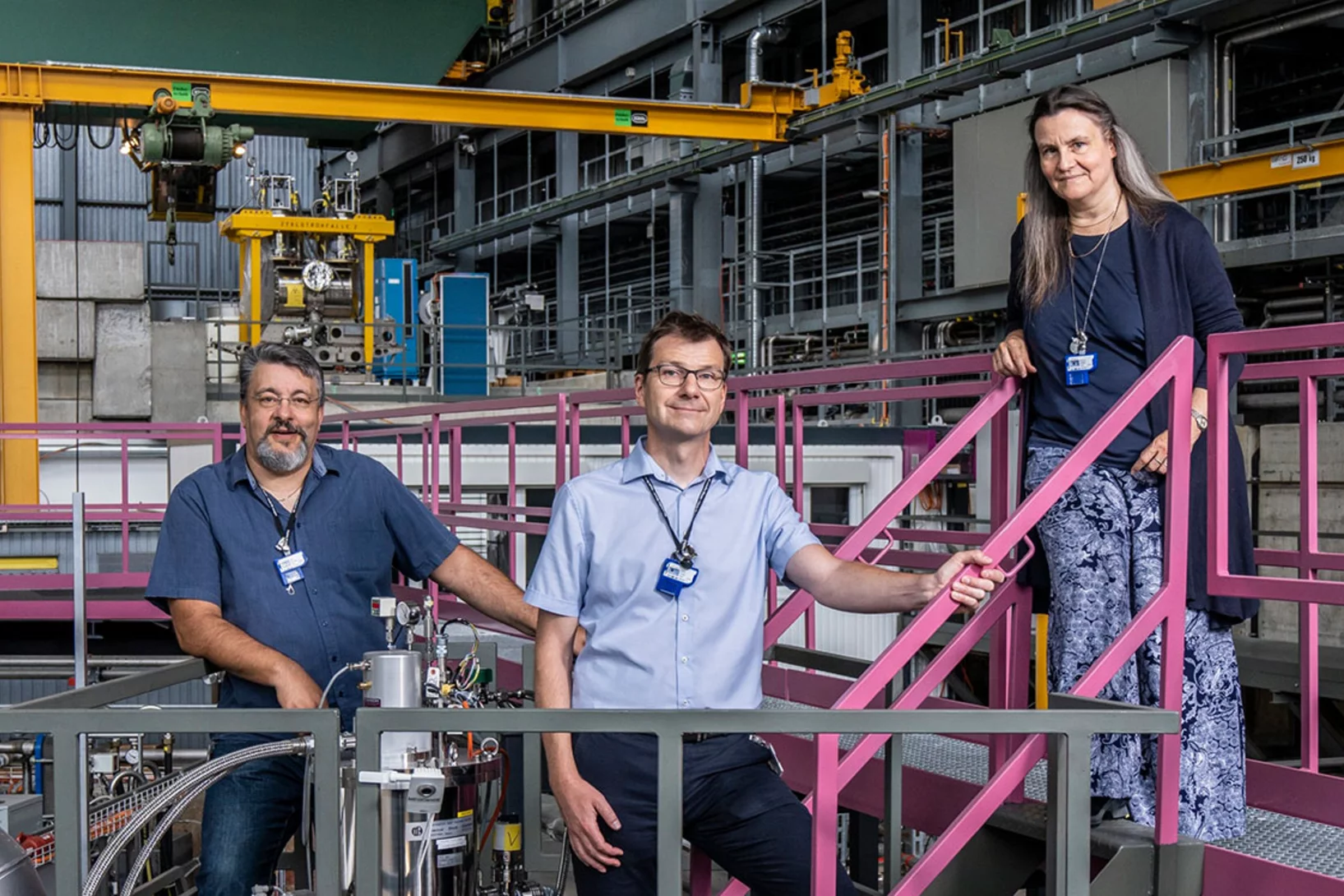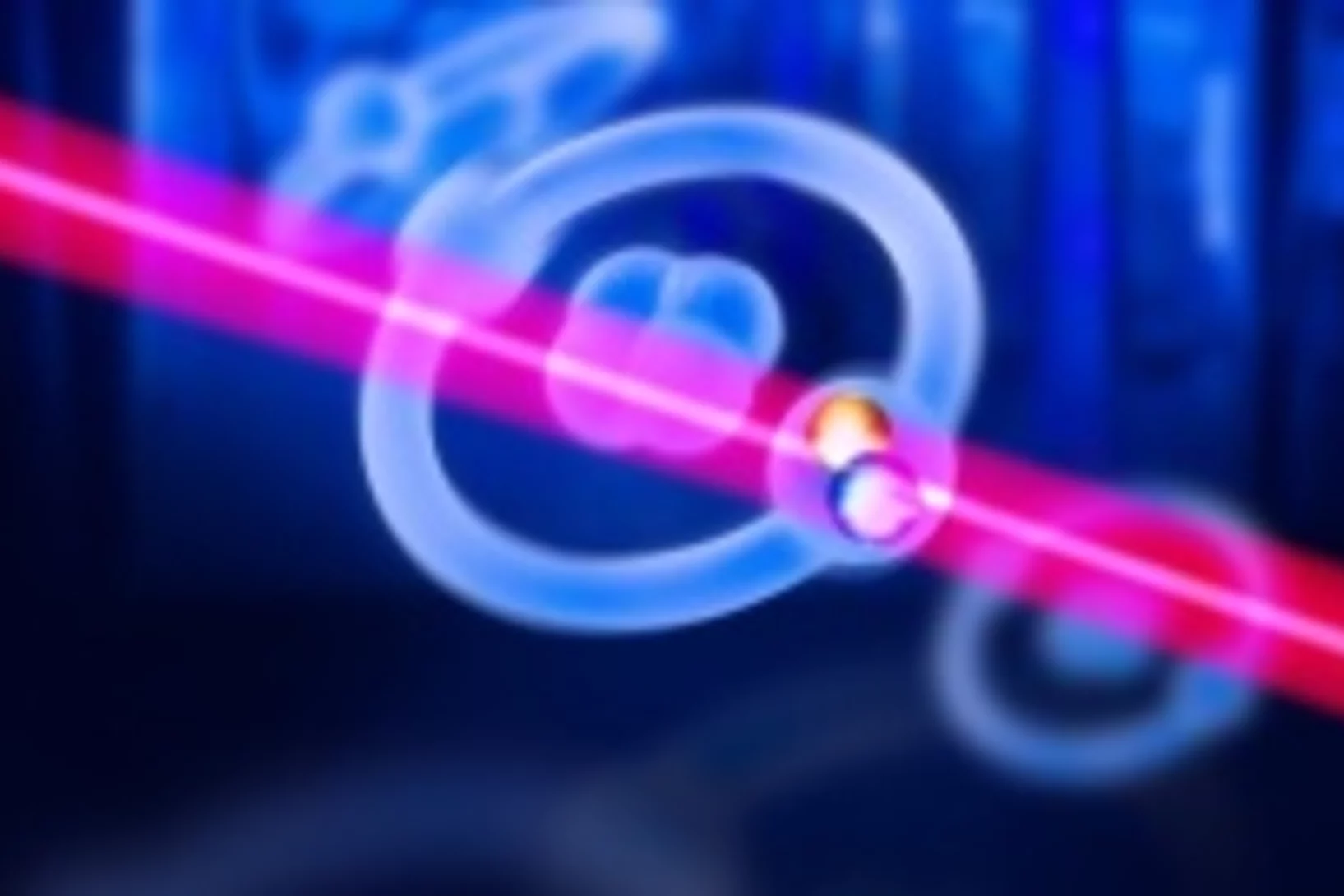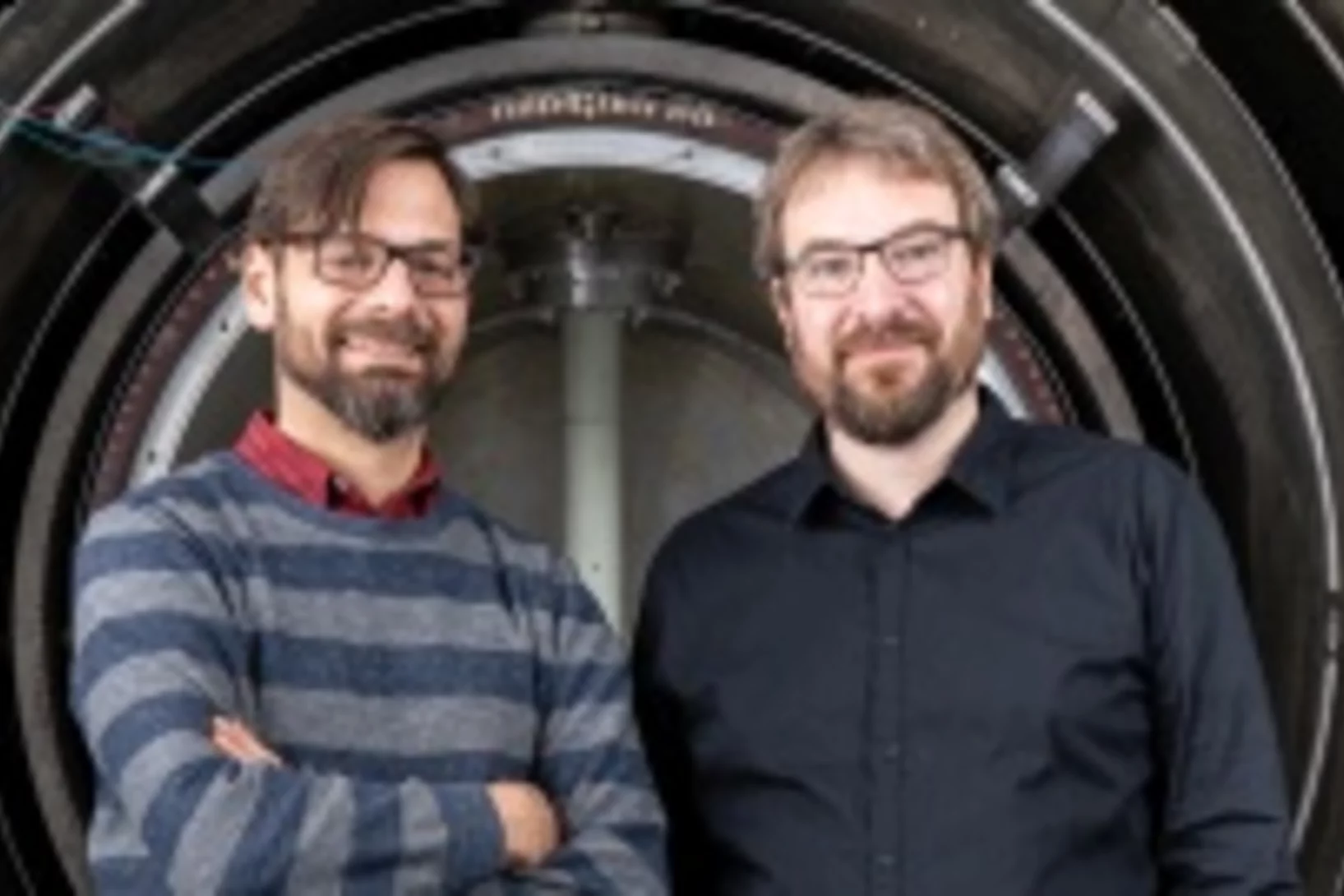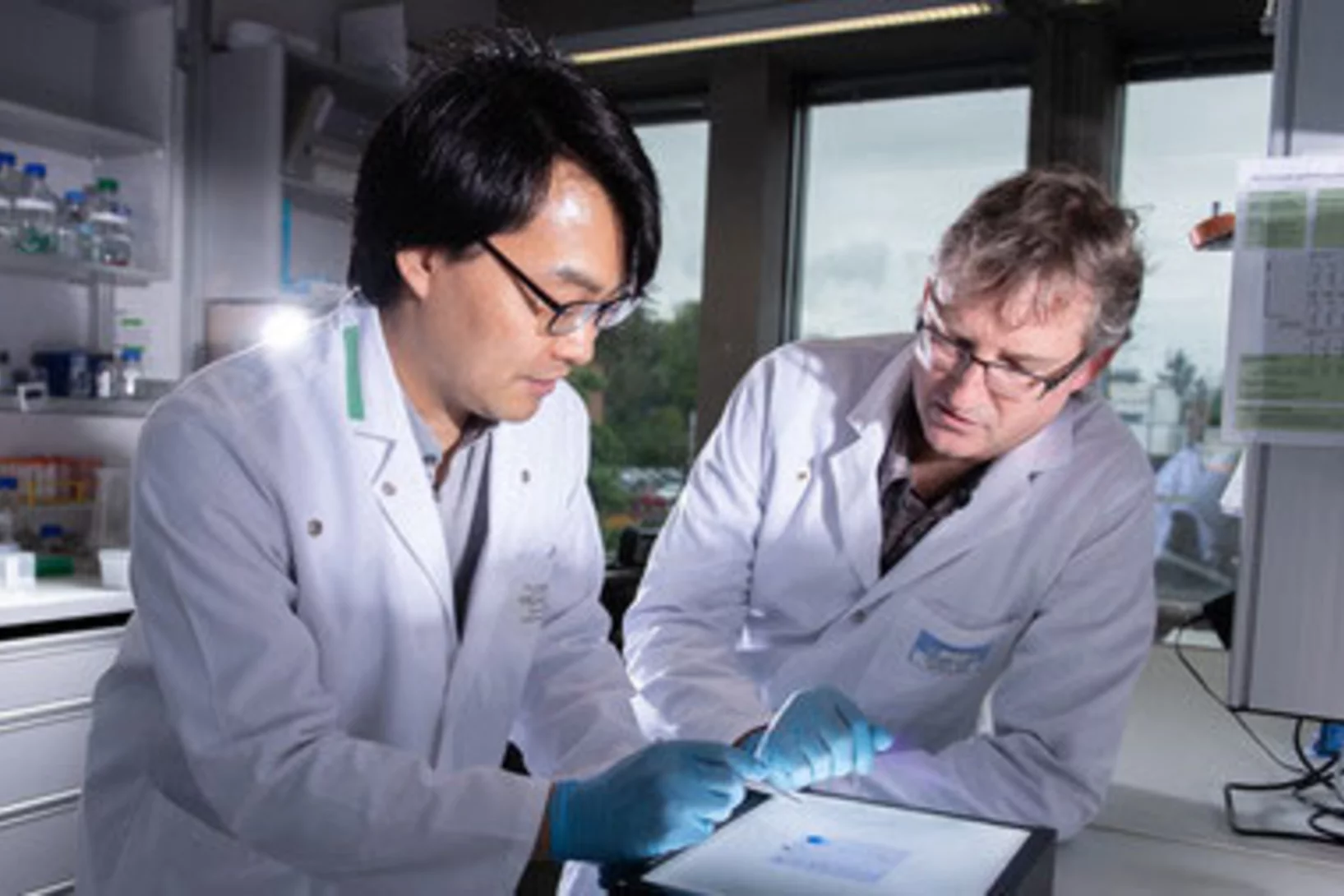Show filters
Measuring How Molecules Communicate
A collaboration between PSI and the University of Vienna has resulted in a new experimental method that, for the first time, enables the direct measurement of partial charges in molecules. Partial charges are fundamental to understanding molecular structure, interactions, and reactivity, yet until now no general technique existed to determine them experimentally.
Carbocation, diradical, and superelectrophile in one molecule?
The pentafluorophenyl cation (C₆F₅⁺) breaks these rules with a borderline “crazy” reactivity.
Topological defects determine evolution of charge density wave phase transition
Total scattering signals collected at SwissFEL reveal the role of topological defects when switching properties of a charge density wave material. The defect formation and dynamics after laser excitation reveals new insights into the functionality of quantum materials.
New standards in nuclear physics
With unprecedented precision: PSI researchers measure the nuclear radius of muonic helium-3 and put the theories of atomic physics to the test.
Primer on X-ray magnetic circular dichroism
X-ray magnetic circular dichroism (XMCD) is a magneto-optical effect that describes the difference in absorption between left and right circularly polarized X-rays by a magnetized material. It has been widely applied to the study of magnetic systems and of magnetic phenomena and its unique capabilities make it a fundamental tool for the study of novel magnetic phenomena and new materials systems.
Defect structure controls the thermal magnetic switching rate of nano-sized metallic particles.
Past experiments done at the Paul Scherrer Institut, probed the thermal switching properties of nano-sized metallic magnetic particles
Generating a highly uniform magnetic field inside the magnetically shielded room of the n2EDM experiment
The central magnetic field of the n2EDM experiment based at PSI is of paramount importance for achieving the sensitivity goal. The necessary field homogeneity was recently demonstrated, as described here.
With pad, pencil, and algorithms
Physicist Dominik Sidler is developing fundamental theories for previously inexplicable phenomena.
Prestigious funding for three research projects at PSI
Concrete, chemical catalysis and the search for new physics – three PSI researchers have each received a grant from the Swiss National Science Foundation for these areas of research.
Mapping the ecosystem of Wannier Functions software
A new review article, just published in Reviews of Modern Physics and highlighted on the journal cover, provides a map to the vast landscape of software codes that allow researchers to calculate Wannier functions, and to use them for materials properties predictions. The authors, from all over Europe and the USA, include two PSI scientists. After providing readers with the theoretical foundations on Wannier functions and their calculation, together with intuitive graphical schematics to explain what Wannier functions are, the authors map the existing Wannier codes and the key applications.
YBa1−𝑥Sr𝑥CuFeO5 layered perovskites: An attempt to explore the magnetic order beyond the paramagnetic-collinear-spiral triple point
Layered perovskites of general formula AA'CuFeO5 are characterized by the presence of spiral magnetic phases whose ordering temperatures 𝑇spiral can be tuned far beyond room temperature by introducing modest amounts of Cu/Fe chemical disorder in the crystal structure. This rare property makes these materials prominent candidates to host multiferroicity and magnetoelectric coupling at temperatures suitable for applications. Moreover, it has been proposed that the highest 𝑇spiral value that can be reached in this structural family ( ∼400 K) corresponds to a paramagnetic-collinear-spiral triple point with potential to show exotic physics. Since generating high amounts of Cu/Fe disorder is experimentally difficult, the phase diagram region beyond the triple point has been barely explored. To fill this gap we investigate here eleven YBa1−𝑥Sr𝑥CuFeO5 solid solutions (0≤𝑥≤1 ), where we replace Ba with Sr with the aim of enhancing the impact of the experimentally available Cu/Fe disorder. Using a combination of bulk magnetization measurements, synchrotron x-ray and neutron powder diffraction we show that the spiral state with 𝐤𝑠=(1/2,1/2,1/2±𝑞) is destabilized beyond a critical Sr content, being replaced by a fully antiferromagnetic state with ordering temperature 𝑇coll2≥𝑇spiral and propagation vector 𝐤𝑐2=(1/2,1/2,0). Interestingly, both 𝑇spiral and 𝑇coll2 increase with 𝑥 with comparable rates. This suggests a common, disorder-driven origin for both magnetic phases, consistent with theoretical predictions.
Fractional quasiparticles in three dimensions
Specific signatures of fractionalization have been observed in a three-dimensional system known as quantum spin ice.
Exact solution of the classical and quantum Heisenberg mean field spin glasses
We solve and elucidate the physics of quantum Heisenberg spins glasses, which governs the local moments in randomly doped, strongly correlated materials.
Unlocking the secrets of proteins
This year’s Nobel Prize in Chemistry goes to three researchers who have made a decisive contribution to cracking the code of proteins – important building blocks of life. However, developing applications from this knowledge, for example in medicine, requires research institutes such as PSI.
Discovery of charge order above roomtemperature in the prototypical kagome superconductor La(Ru1−xFex)3Si2
The kagome lattice is an intriguing and rich platform for discovering, tuning and understanding the diverse phases of quantum matter, crucial for advancing modern and future electronics. Despite considerable efforts, accessing correlated phases at room temperature has been challenging.
Computational marathon matches the efficiency of the AiiDA platform with the power of Switzerland Alps supercomputer
A group of researchers from the LMS lab at PSI has conducted a "hero run" on the new Swiss supercomputer, occupying it entirely for about 20 hours with calculations managed remotely by the AiiDA software tools. The run demonstrated the efficiency and stability of AiiDA, that could seamlessly fill the entire capacity of an exascale machine, as well as the performance of the Alps supercomputer, that has been just inaugurated. All the results will soon be published on the Materials Cloud.
“Magic” element challenges current model of nucleosynthesis
Surprising measurements lead to the discovery of an unknown process.
Uniquely precise: New value for the half-life of samarium-146
Researchers at PSI and the Australian National University have re-determined the half-life of samarium-146 with great precision.
Nature’s sunscreen and other SwissFEL stories
From DNA repair to catalysts: how the Alvra experimental station at SwissFEL has developed into a special tool for biology and chemistry research.
A bionanomachine for green chemistry
PSI researchers have characterised a unique enzyme from bacteria that enables an important chemical reaction.
Charge fractionalisation observed spectroscopically
Quantum mechanics tells us that the fundamental unit of charge is unbreakable – but exceptions exist.
Altermagnetism proves its place on the magnetic family tree
Experiments at the Swiss Light Source SLS prove the existence of a new type of magnetism, with broad implications for technology and research.
Repairing genetic damage with sunlight
An international research team at SwissFEL of PSI has discovered how an enzyme repairs DNA damage with the help of sunlight.
The secret life of an electromagnon
SwissFEL sheds light on how lattice and atomic spins jiggle together.
A gold standard for computational materials science codes
The most comprehensive verification effort so far on computer codes for materials simulations.
Immerse yourself in the cytoskeleton
The cytoskeleton is a little marvel. Probing it promises to reveal, among other things, new possibilities for cancer therapy.
Deciphering the secrets of the brain
A place for cutting-edge research: PSI researchers to receive comprehensive funding from the US NIH for their brain research.
Mystery of microgels solved
Researchers at PSI and the University of Barcelona can explain the strange shrinking of microgels experimentally.
Hairy cells: How cilia’s motor works
Understanding this motion may help to tackle health problems that affect cilia, which range from fertility issues to lung disease and COVID-19.
Mirror, mirror on the wall…
…. Now we know there are chiral phonons for sure
An algorithm for sharper protein films
A newly developed algorithm allows measurements performed at X-ray free-electron lasers to be evaluated more efficiently.
Hunting for the radius of a proton
0.000 000 000 000 840 87 (39) metres – scientists working at PSI have come up with this astonishing figure for the radius of a proton.
How vision begins
PSI scientists have discovered the very first step occurring in the eye when light hits the retina.
Two million Swiss francs granted to search for new physics
Philipp Schmidt-Wellenburg will set up a novel experiment at a muon beamline at PSI.
CNRS movie on n2EDM
Our French collaborators and CNRS produced an excellent short movie about our common n2EDM experiment. The apparatus is currently being set up in
UCN Area South. The collaboration is on track for commissioning of the apparatus with neutrons towards the end of 2022.
How to get chloride ions into the cell
A molecular movie shot at PSI reveals the mechanism of a light-driven chloride pump
More insight into how vision works
PSI scientists have shed light on the structure of an important component of the eye: CNG ion channels whose job is to relay optical signals to the brain.
Quantum billiards with correlated electrons
Our collaborators at the Jozef Stefan Institute – the leading author, Jan Ravnik, is now a PSI Fellow at LMN – report a study of the electron ordering in equilateral triangle structures via photoexcitation of the prototypical dichalcogenide 1T-TaS2.
A time-domain phase diagram of metastable quantum states
Our collaborators at the Jozef Stefan Institute – the leading author, Jan Ravnik, is now a PSI Fellow at LMN – report a ‘dynamical’ phase diagram of metastable quantum states generated via photoexcitation of the prototypical dichalcogenide material 1T-TaS2.
The Swiss research infrastructure for particle physics CHRISP
Researchers are looking for deviations in the current standard model of physics and want to find out how our universe is constructed.
Size of helium nucleus measured more precisely than ever before
In experiments at the Paul Scherrer Institute PSI, an international research collaboration has measured the radius of the atomic nucleus of helium five times more precisely than ever before. The new value can be used to test fundamental physical theories.
Magnetically shielded from the rest of the world
At the Paul Scherrer Institute PSI, researchers together with a company have constructed a room that is one of the best magnetically shielded places on the earth. With its help, they want to solve the last mysteries of matter and answer a fundamental question: Why does matter - and thus why do we - exist at all?
A protein's unexpected "doming"
Researchers have coaxed a secret out of the vital protein cytochrome c that it kept well-hidden up to now. Measurements at the X-ray free-electron laser SwissFEL reveal structural changes that science had previously ruled out for this kind of biomolecule.
Efficient analysis method for multiplet lines in Fourier space
In his first paper as lead author, LMN PhD student Adrian Beckert and co-authors demonstrate an algorithm which takes advantage of peak multiplicity to retrieve line shape information. The results were published in Optics Express and are relevant to a wide range of topics, ranging from neutron-scattering to spectroscopy of rare-earth doped solids.
In search of new physics
With the high-intensity proton accelerator HIPA, the Paul Scherrer Institute generates elementary particles to clarify how the universe is structured. Using pions, muons, and neutrons, the researchers conduct experiments to test the standard model of particle physics.
Long-lived pionic helium: Exotic matter experimentally verified for the first time
Exotic atoms, in which electrons are replaced by other particles, allow deep insights into the quantum world. After eight years, an international group of scientists have succeeded in a challenging experiment conducted at PSI’s pion source: they created an artificial atom called “pionic helium”.
Tracking down the mystery of matter
At the ultracold neutron source at PSI, researchers have measured a property of the neutron more precisely than ever before: its electric dipole moment. That's because the search is still on for an explanation of why, after the Big Bang, there was more matter than antimatter.
Molecular scissors stabilise the cell's cytoskeleton
Researchers at the Paul Scherrer Institute PSI have an important part of the regulatory cycle that is involved in the formation and degradation of the cytoskeleton. Among other things, they have watched molecular scissors at work.

